Our last full day in Kyoto! After waking up at the Hyatt Place Kyoto, we headed out to visit Enko-ji and Shisen-do nearby. We also made a late lunch reservation for Kani Doraku‘s nearby location. Afterwards, we ended the day with a visit to the Shinto Shimogamo-jinja.
Morning
After waking up, we left the Hyatt Place Kyoto to go directly to a bus stop as it was going to be a fairly long trip. We caught the next subway to head north to the last station, Kokusaikaikan. We arrived with a bit of time until the next bus #5 was scheduled to arrive. We walked to a nearby Lawson to get a quick breakfast.


Lawson is a convenience store chain, similar to 7-Eleven. We grabbed a few items and ate them on a bench in front of the store.
After breakfast, we crossed the street to the Iwakura Osagicho bus stop and caught the next #5 to arrive. We took the bus to the Ichijoji Shimizucho stop, about 10 minutes or so away.
Enko-ji
After getting off the bus, we walked to the east to head to 圓光寺 Enko-ji.

The walk was through a residential area at the base of Kyoto’s eastern mountains.

We came to what was apparently the temple’s exit. We turned to the south to find the entrance.

The entrance wasn’t far away. We were greeted by a nice Japanese maple showing its red fall colors. This temple is supposed to be good for viewing fall foliage, however, it was a bit further away and not very close to much else so we didn’t visit it until today.






A small booklet was provided when entering. It only had one page of English text. The temple’s website has a useful map of the temple grounds with a description of some of the landmarks within.


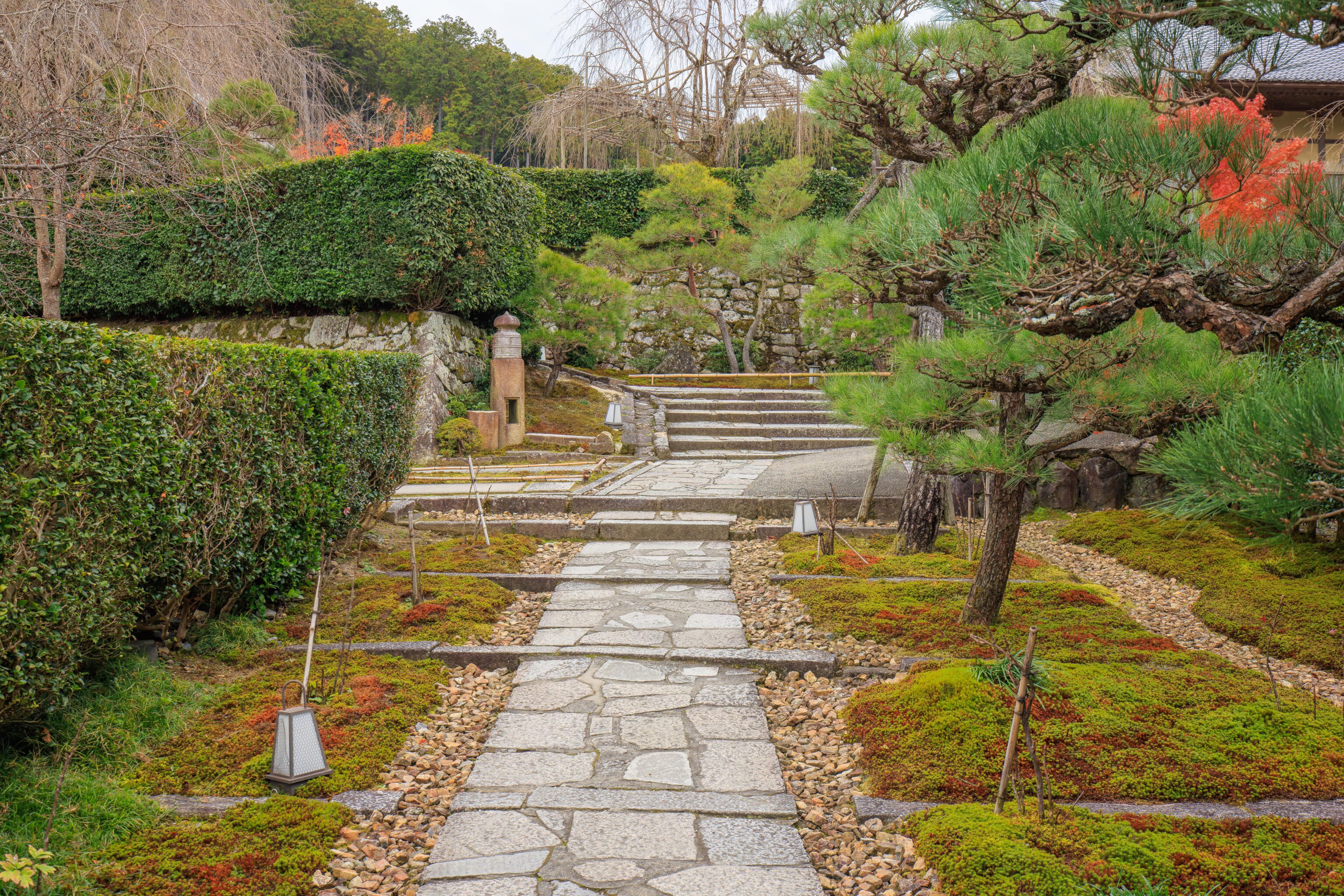
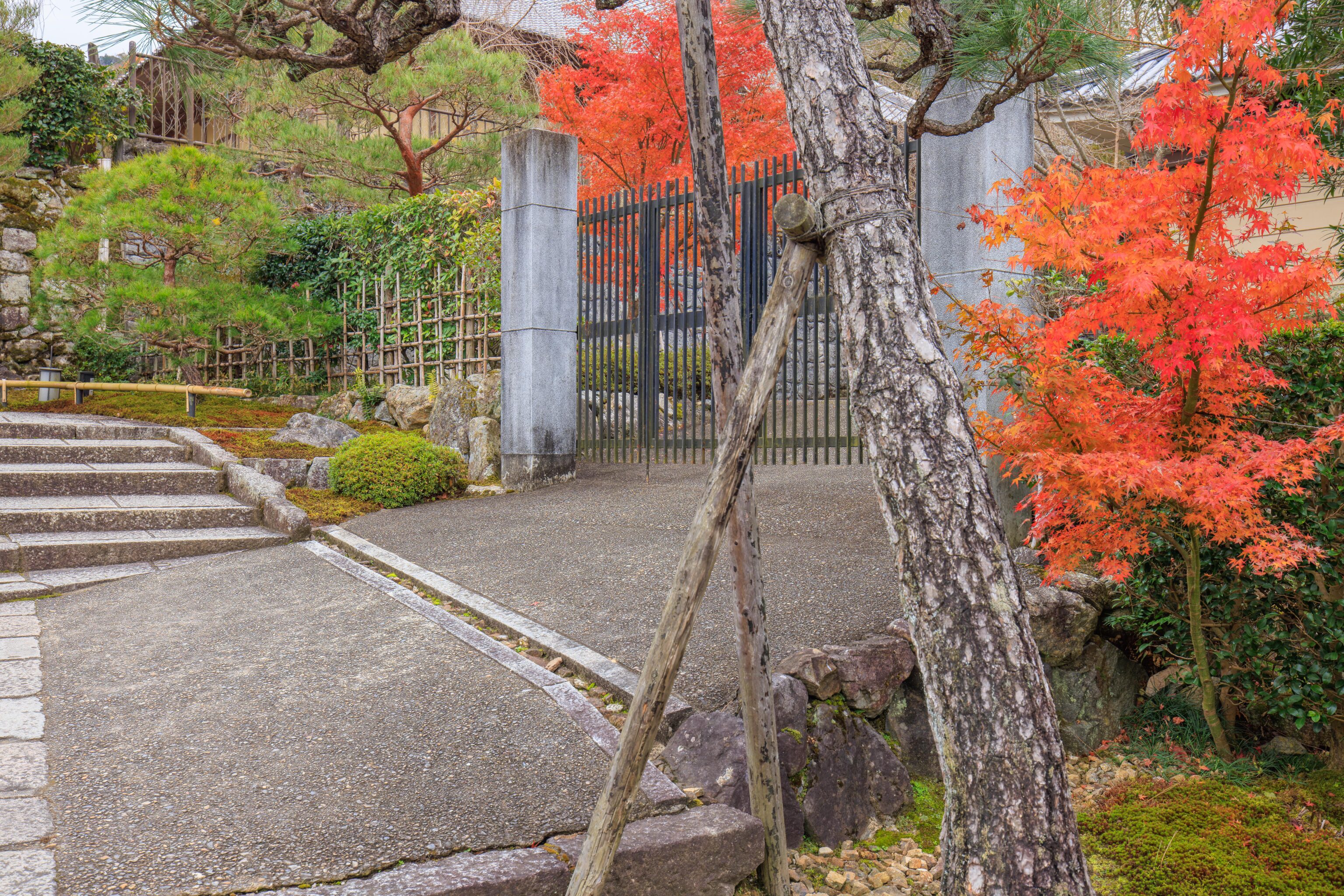
We continued past the ticket office, heading up a mostly straight path.
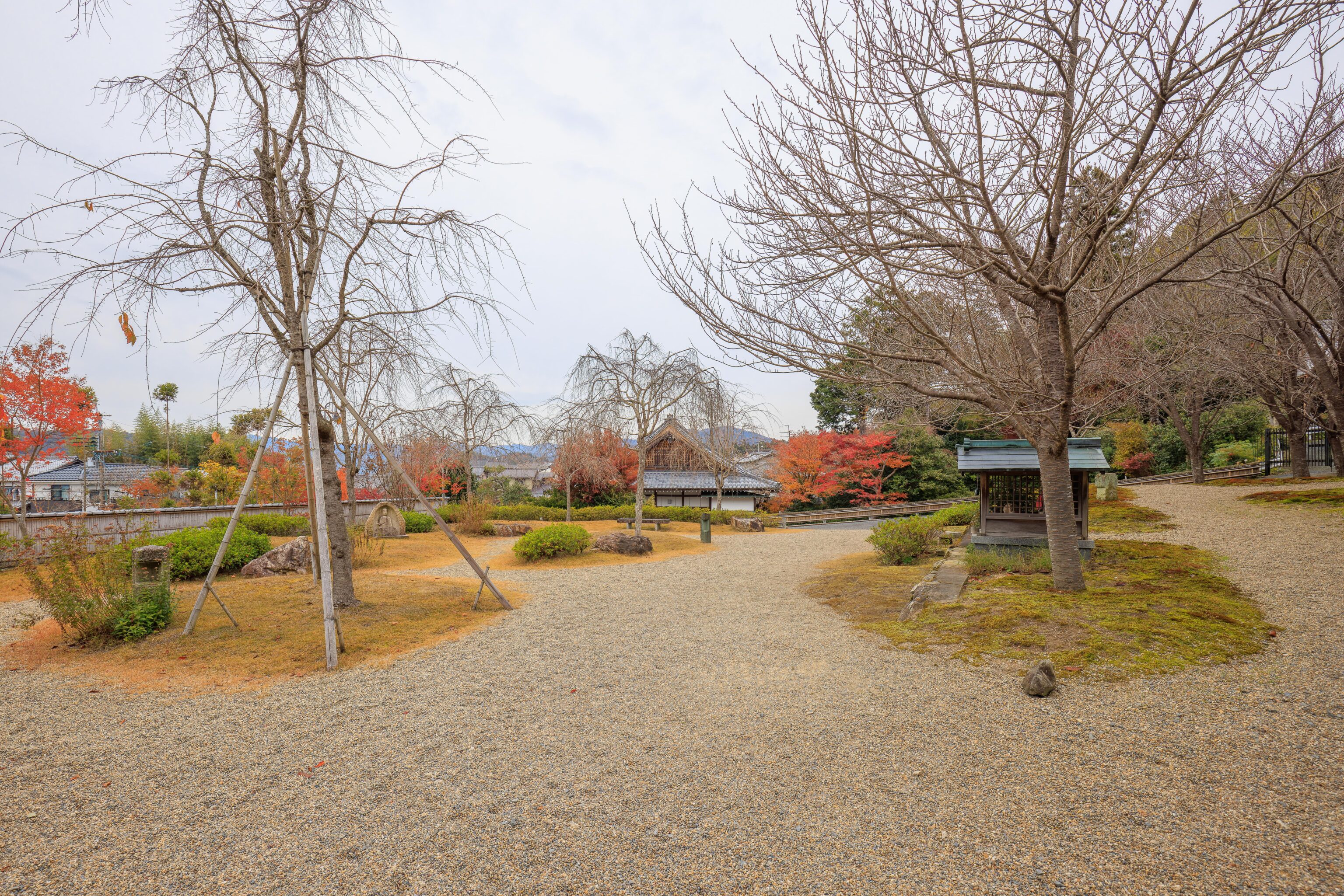
We passed by the Tanouen, a garden in the front part of the temple. All the trees here had already dropped their leaves.

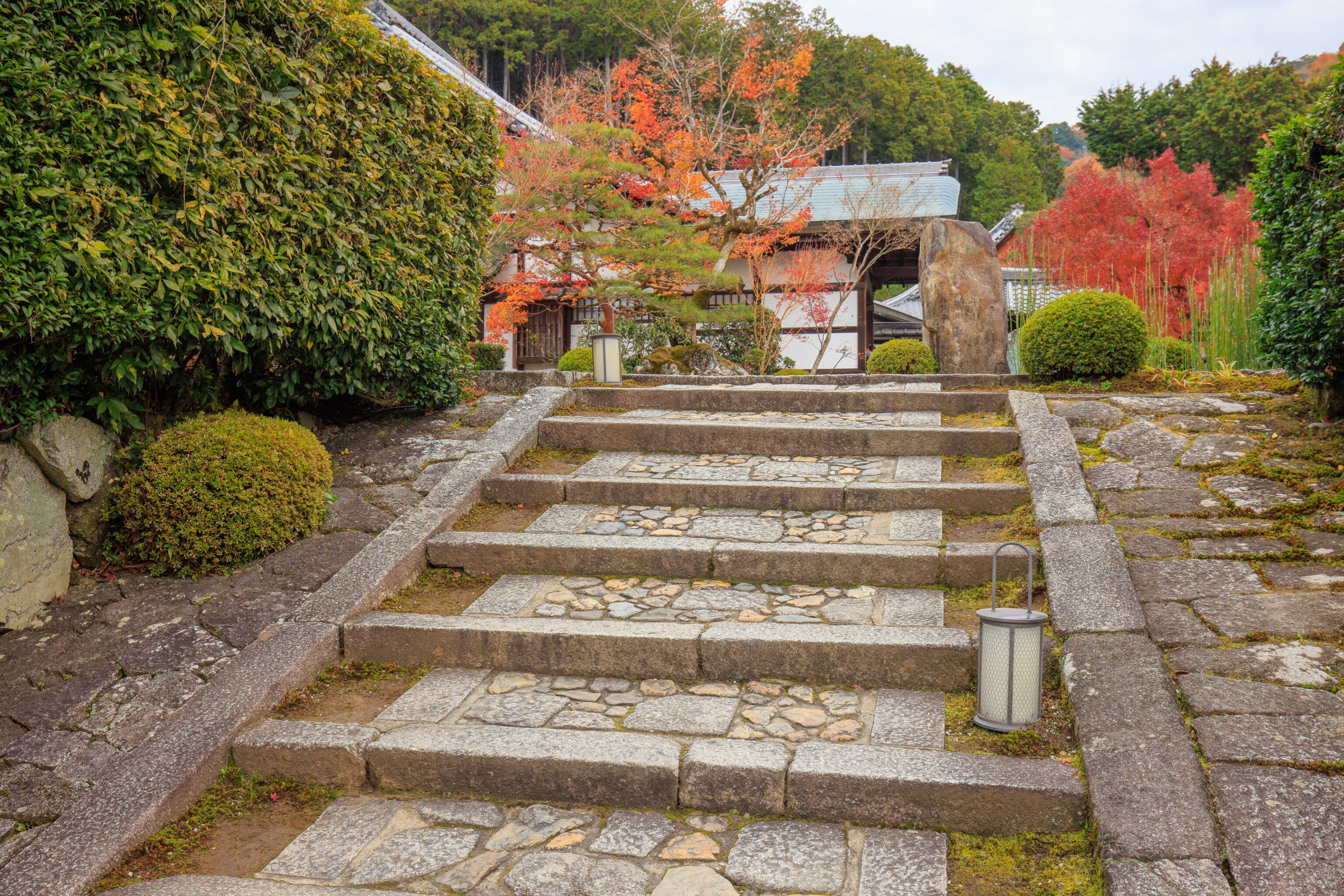
We continued on, going up a slightly steeper slope.

Upon reaching the top of the slope, we were clearly in the main area of the temple. We could see some beautiful fall colors in the background.



We walked by Honryutei, the temple’s dry garden. It is described by the temple’s website a as a dragon flying in a sea of clouds1.

We walked into the first building that we came across, the Zuiunkaku Hall. We had this beautiful view from inside.
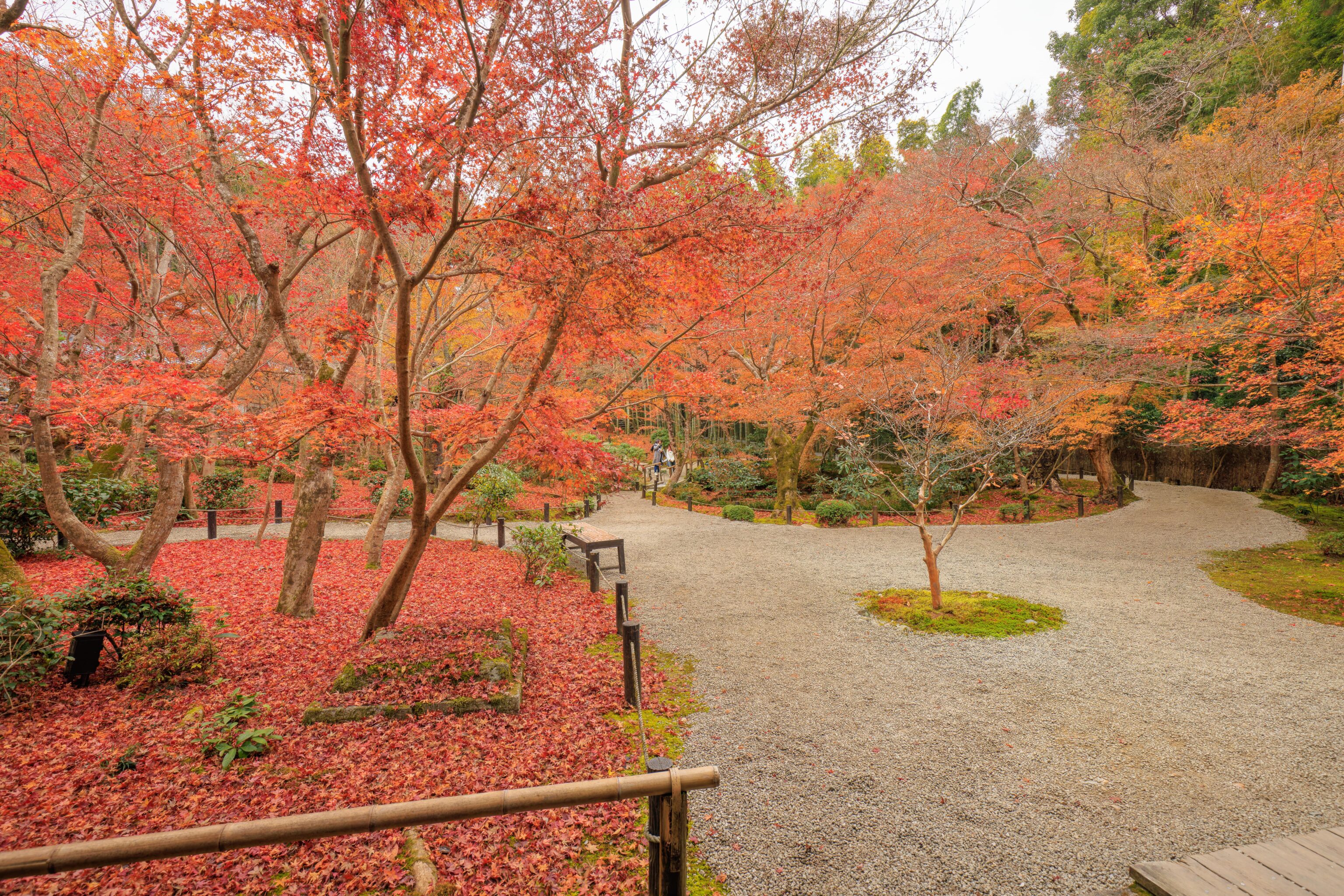
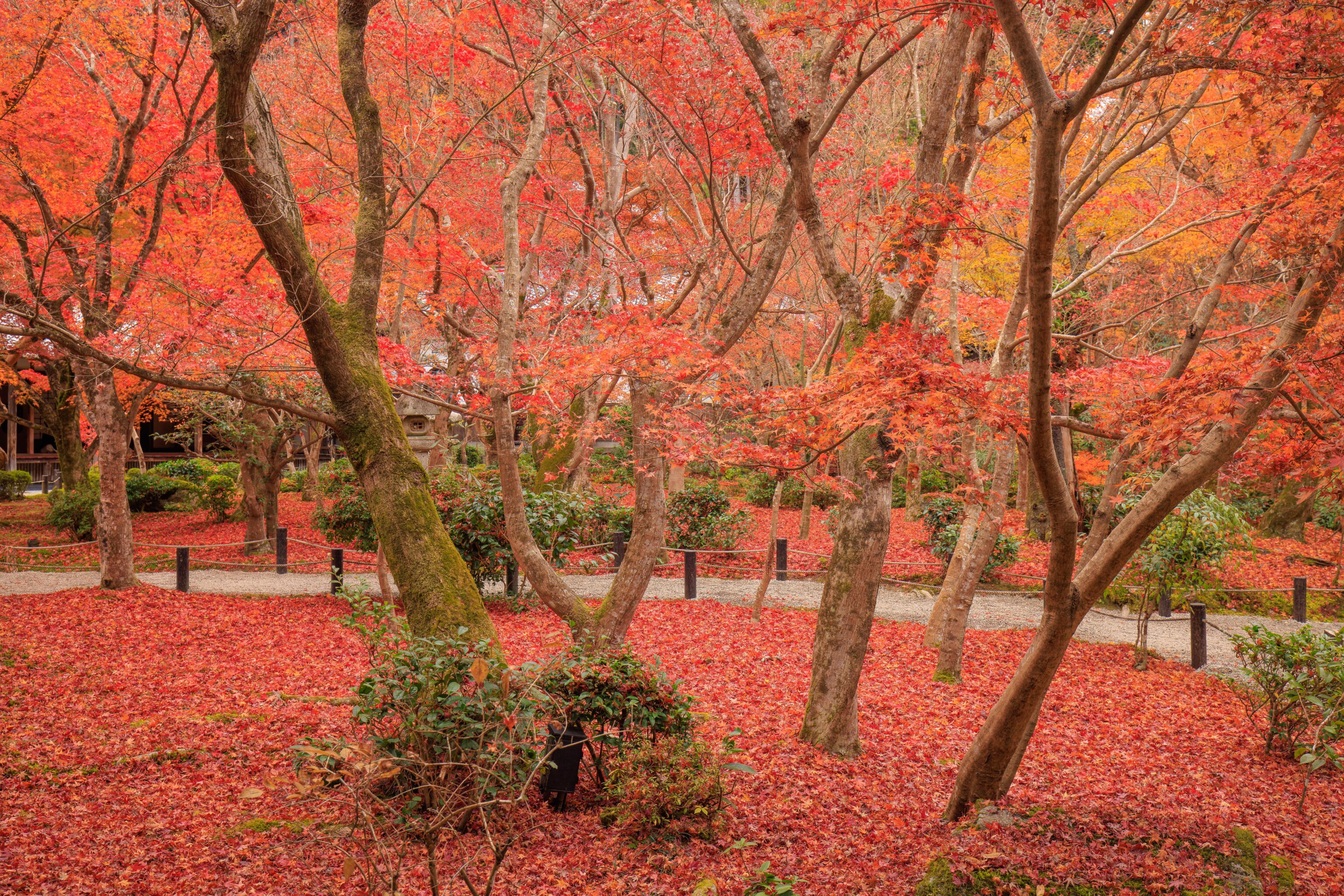
There is actually a large wide doorway right next to the window. The garden area beyond, the Jyugyu no Niwa, was filled with Japanese maples! We were a bit late in the fall foliage season though as there were definitely more leaves on the ground than on the trees. This was, by far, the most fallen maple leaves that we’ve seen on this trip!

The dark opening here on the left is the window that we photographed from. This was the view from outside, in front of the doorway looking to the north.

The Honryutei as viewed from the Zuiunkaku Hall. We exited the building and continued walking to the north past the garden.

This view was from a side door on the Main Hall. A rather typical view into a temple room.

We walked through this small gate to enter the Jyugyu no Niwa garden.

This small bamboo pole is the Suikinkutsu. It “creates an aural atmosphere unique to the deep greenery and abundant water of the northern part of Kyoto.”2


This garden area around the Suikinkutsu looks quite nice, even though it is past peak fall foliage season here.

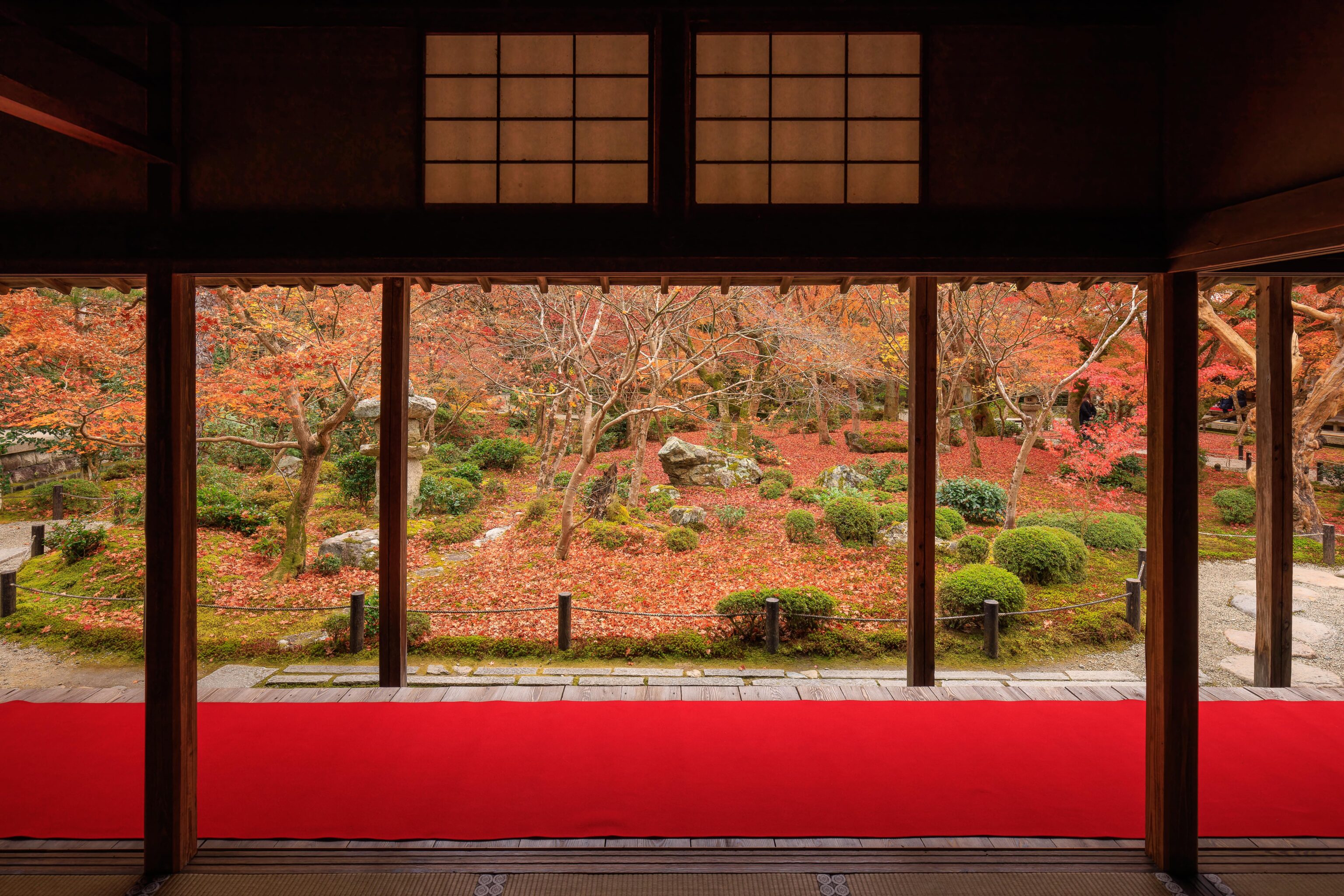
We sat inside for awhile and enjoyed the view. There were only a few people around, very different from the hordes of people that we experienced at busier places in Kyoto.
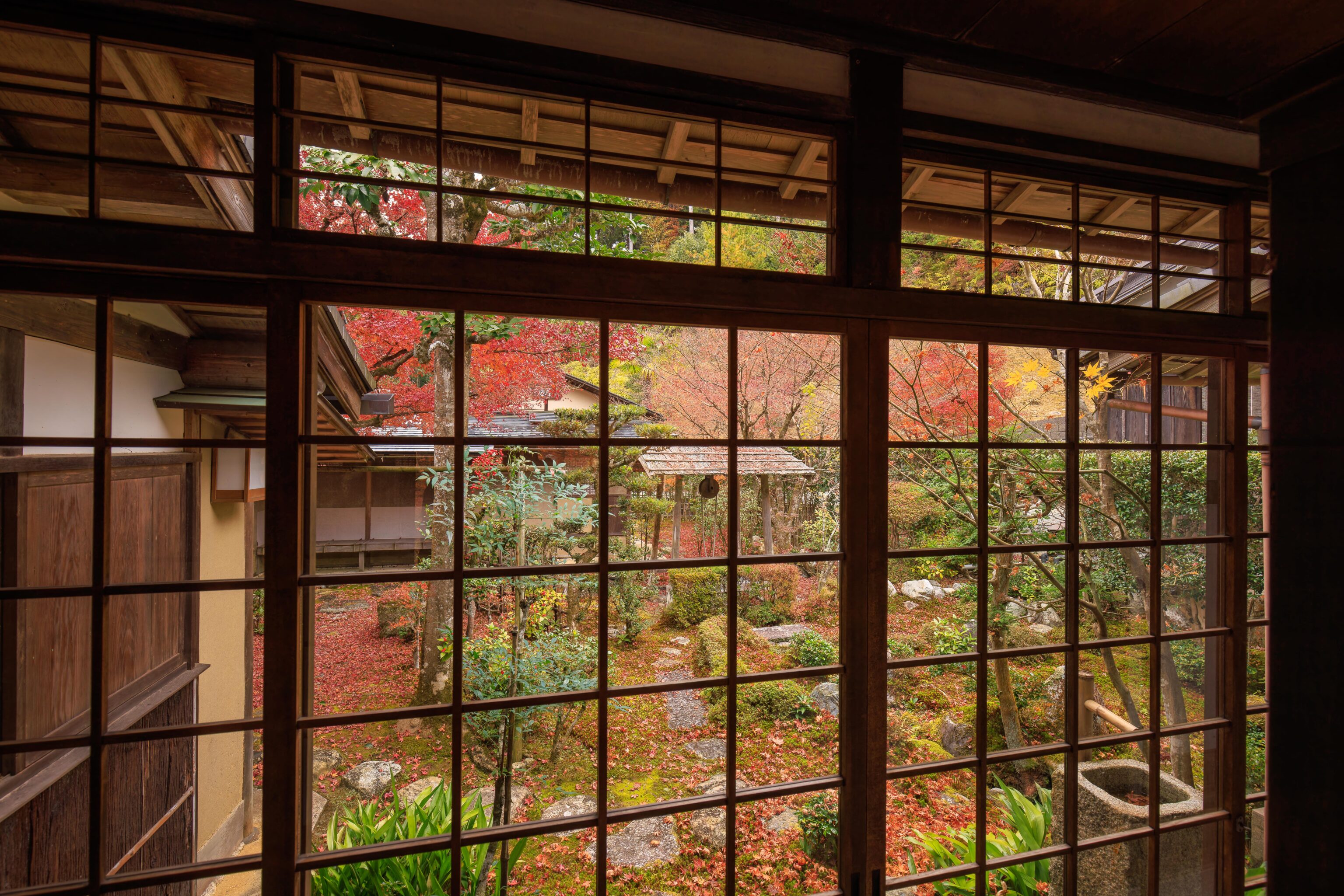
Another garden view, but in the opposite direction. The building in the back on the left may be the Taigetsuan, the tea ceremony room. There also seems to be a well, with pulley, in the garden.
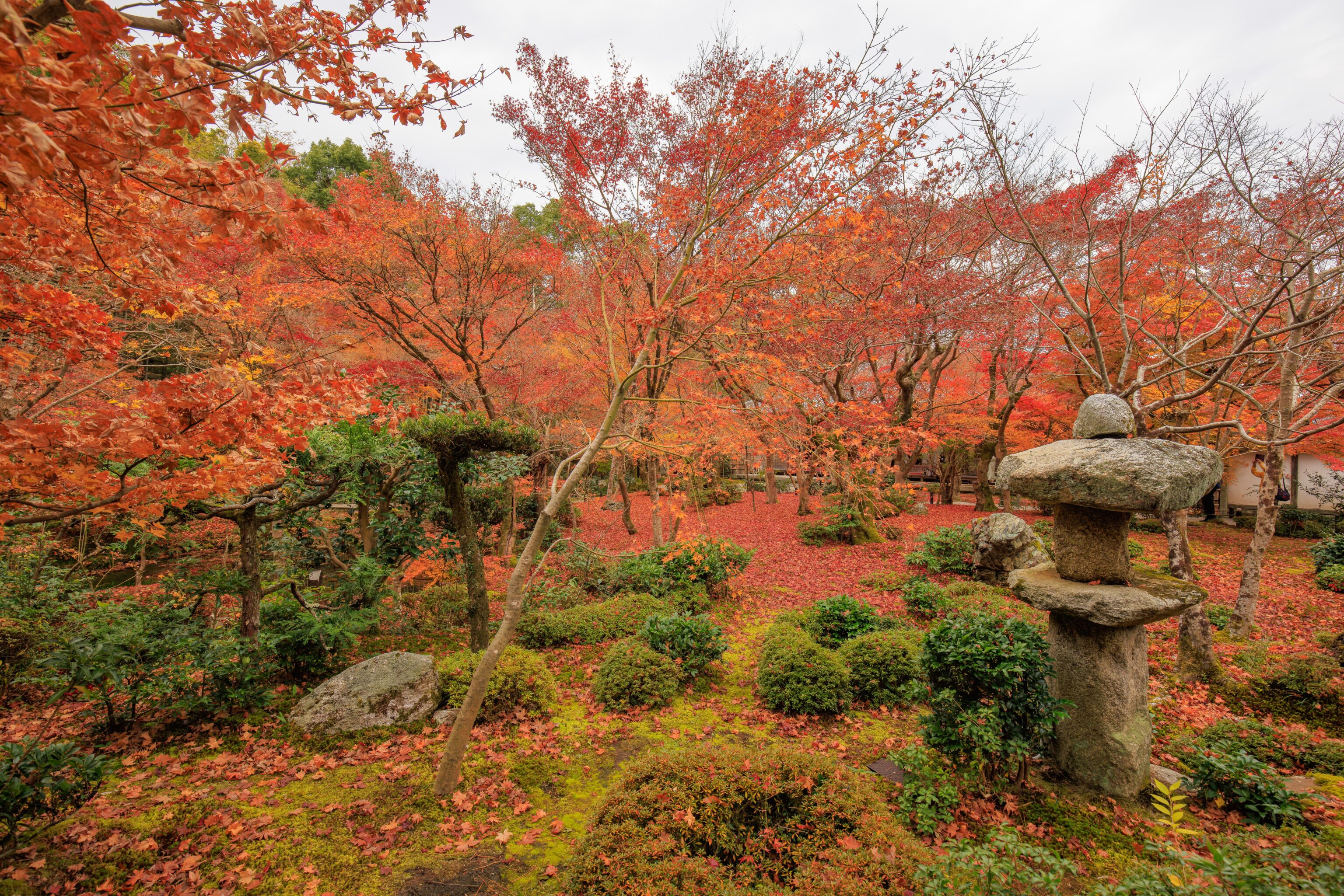
After enjoying the interior spaces of the Main Hall, we headed back outside into the garden.

After a brief detour to visit the conveniently located bathrooms, we found ourselves on the eastern edge of the garden.
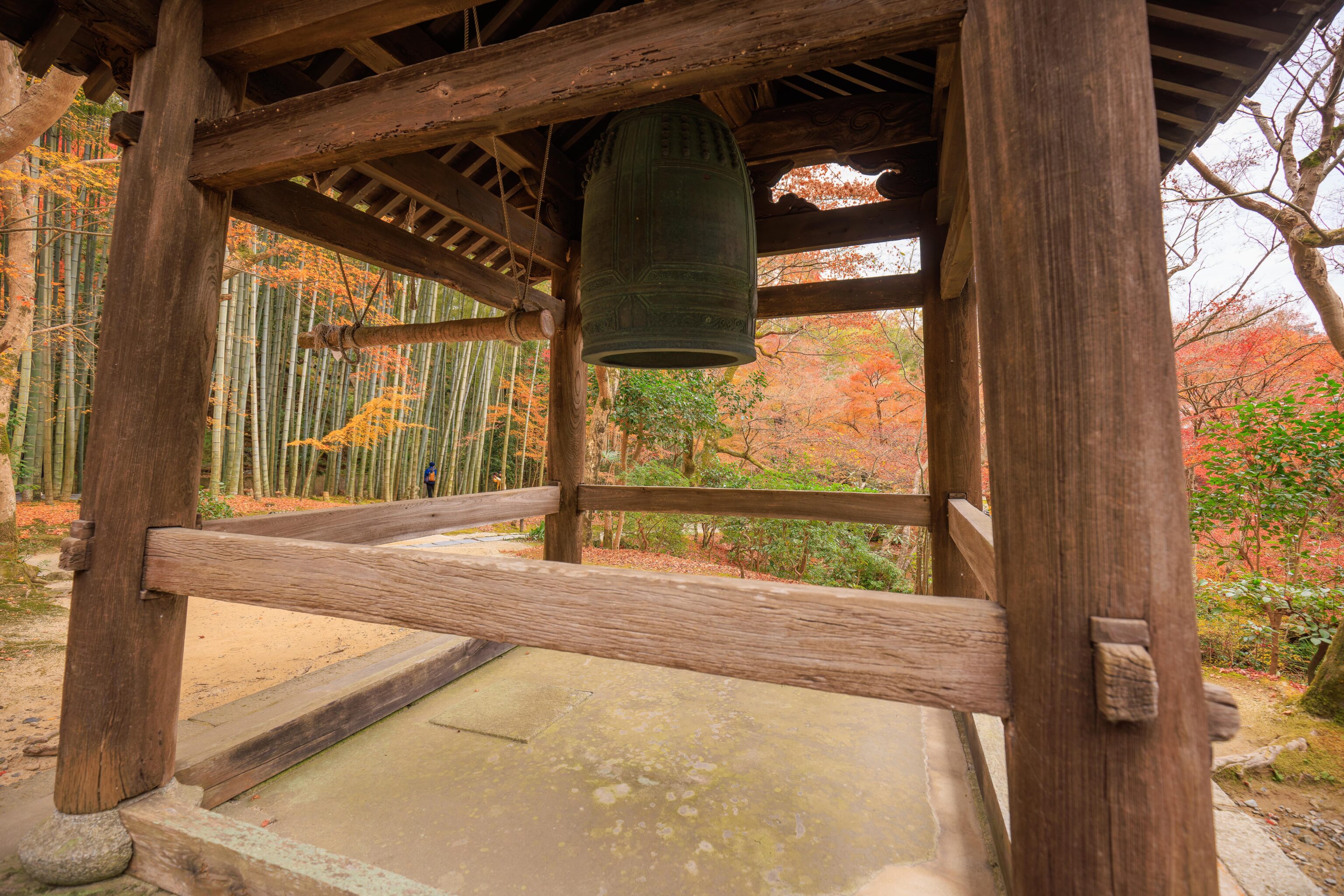
The temple’s bell tower was nearby.


The bell tower was by a small bamboo forest.

We ascended some stairs to reach a level area. We could see additional stairs in front of us as well as some Japanese maples up on the hill along with a small temple building.

To our right, we could see the bamboo forest that we saw next to the bell tower.
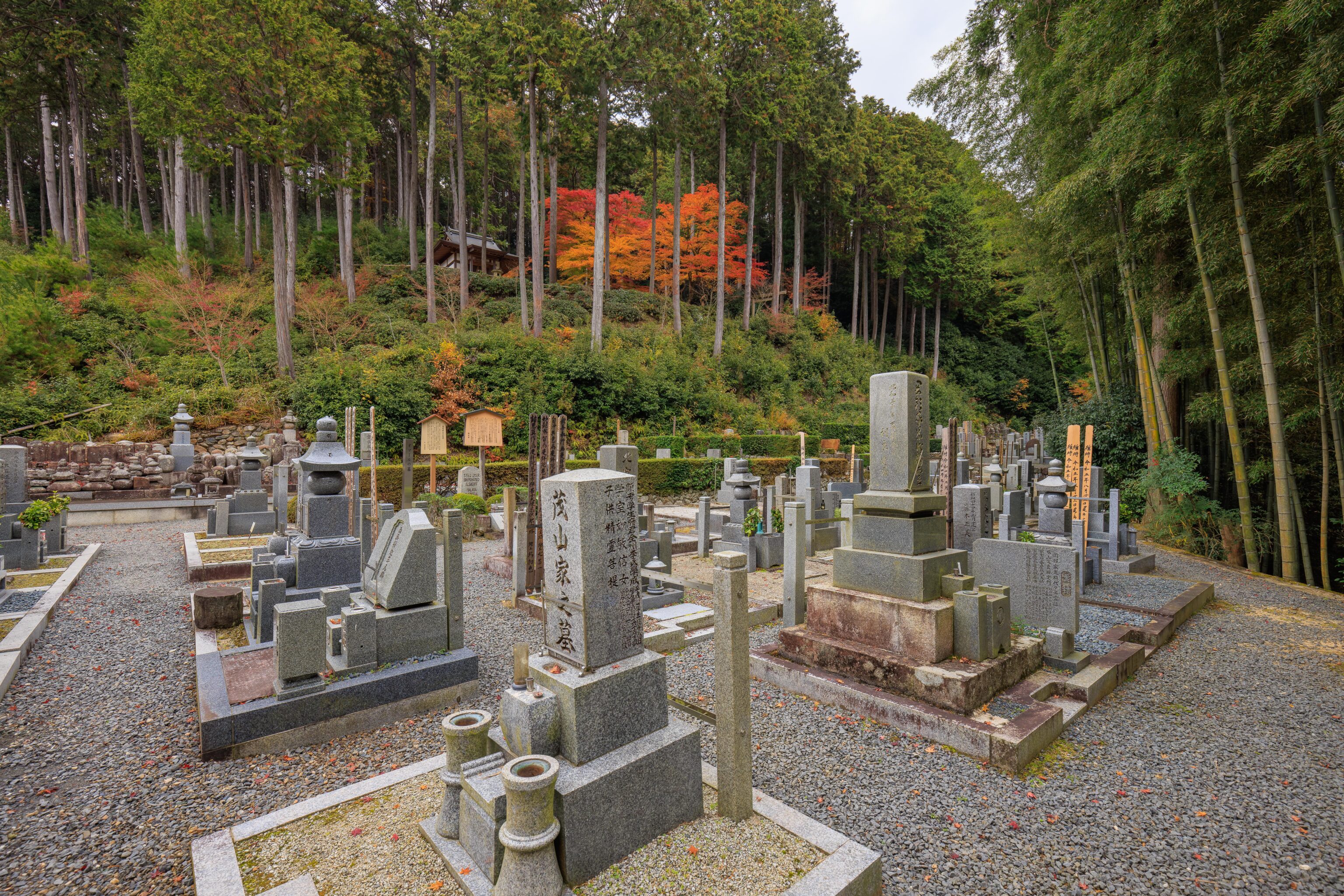

This level area that we had arrived at contains the temple’s cemetery.

This is the grave of Syed Omar Bin Mohamed al-Sagoff, a Malaysian student and member of the royal family who died after Hiroshima during World War II. At the time, Malaysia was formerly a British colony but was under occupation by Japan. He was studying at Hiroshima University after being invited by the Japanese government.

This seems to be a pet memorial. The tablet simply says arigato – thank you. The larger piece of marble on the left lists a cat and a dog.


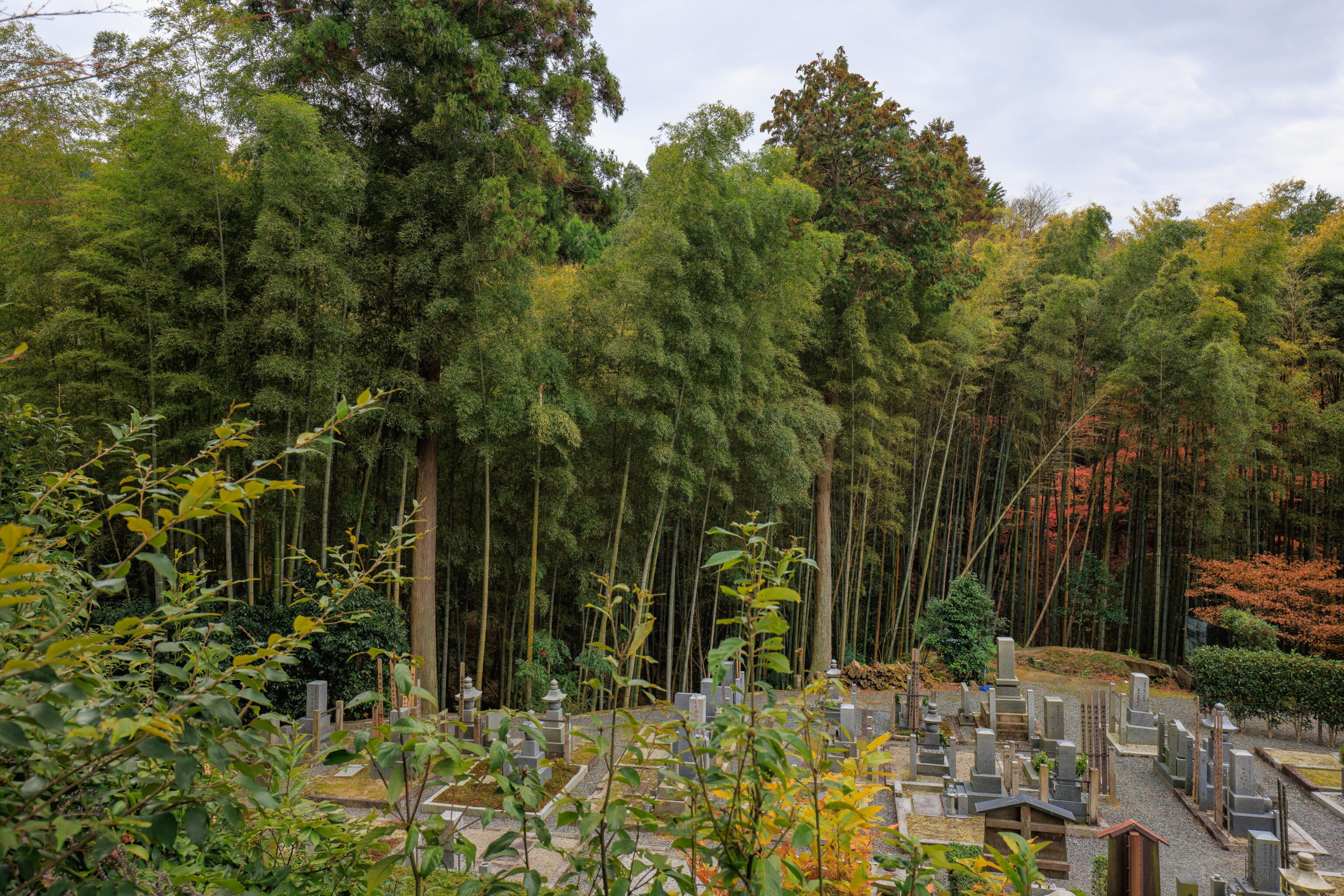

We walked up the that we saw upon entering the cemetery.

There was a stone torii at the top.

We walked to the west under a canopy of maple leaves.
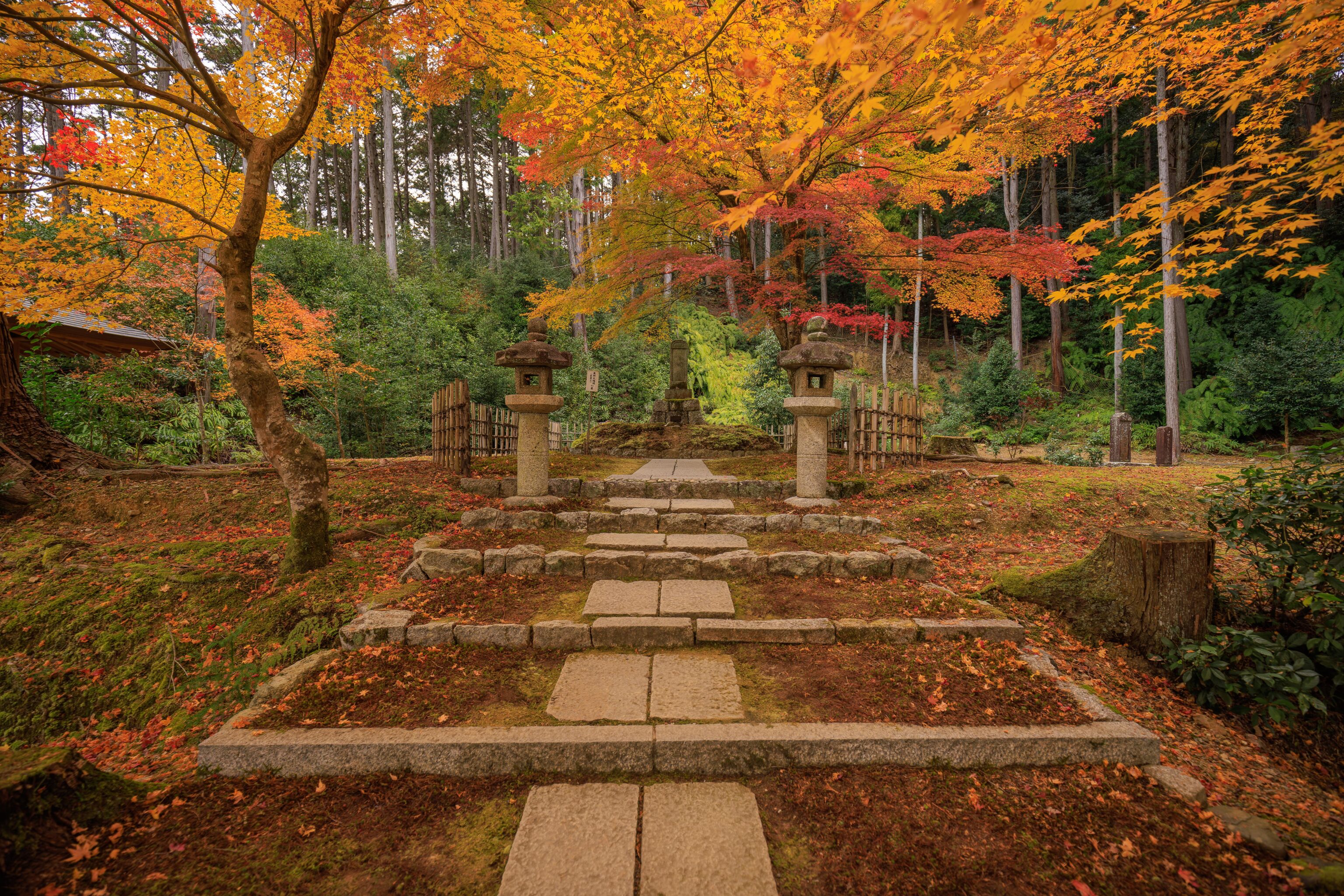
This temple was originally founded in 1601 by the Shogun, Tokugawa Ieyasu3. His teeth are entombed here4.
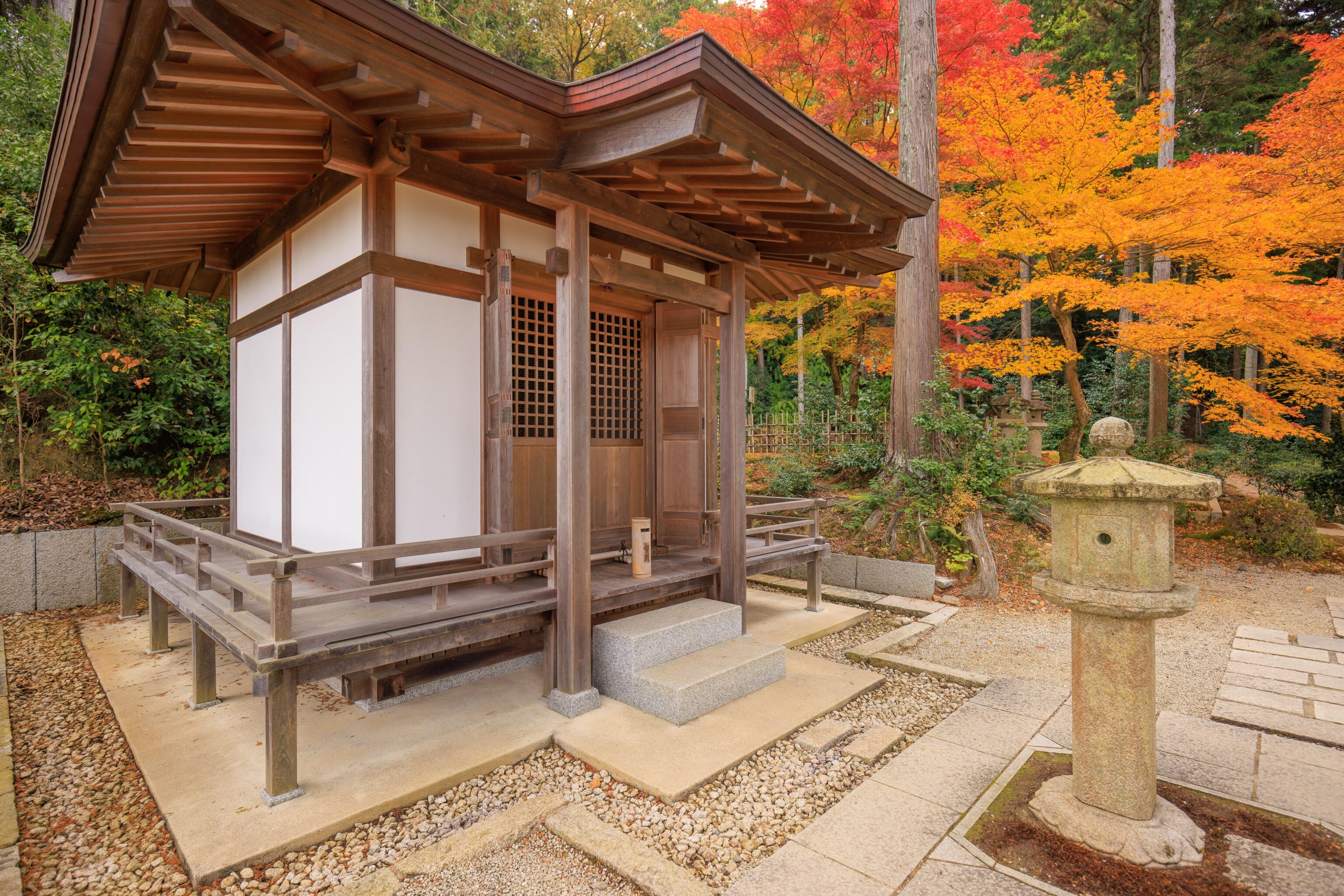
This small building is the Toshogu Shrine, also dedicated to the Shogun.
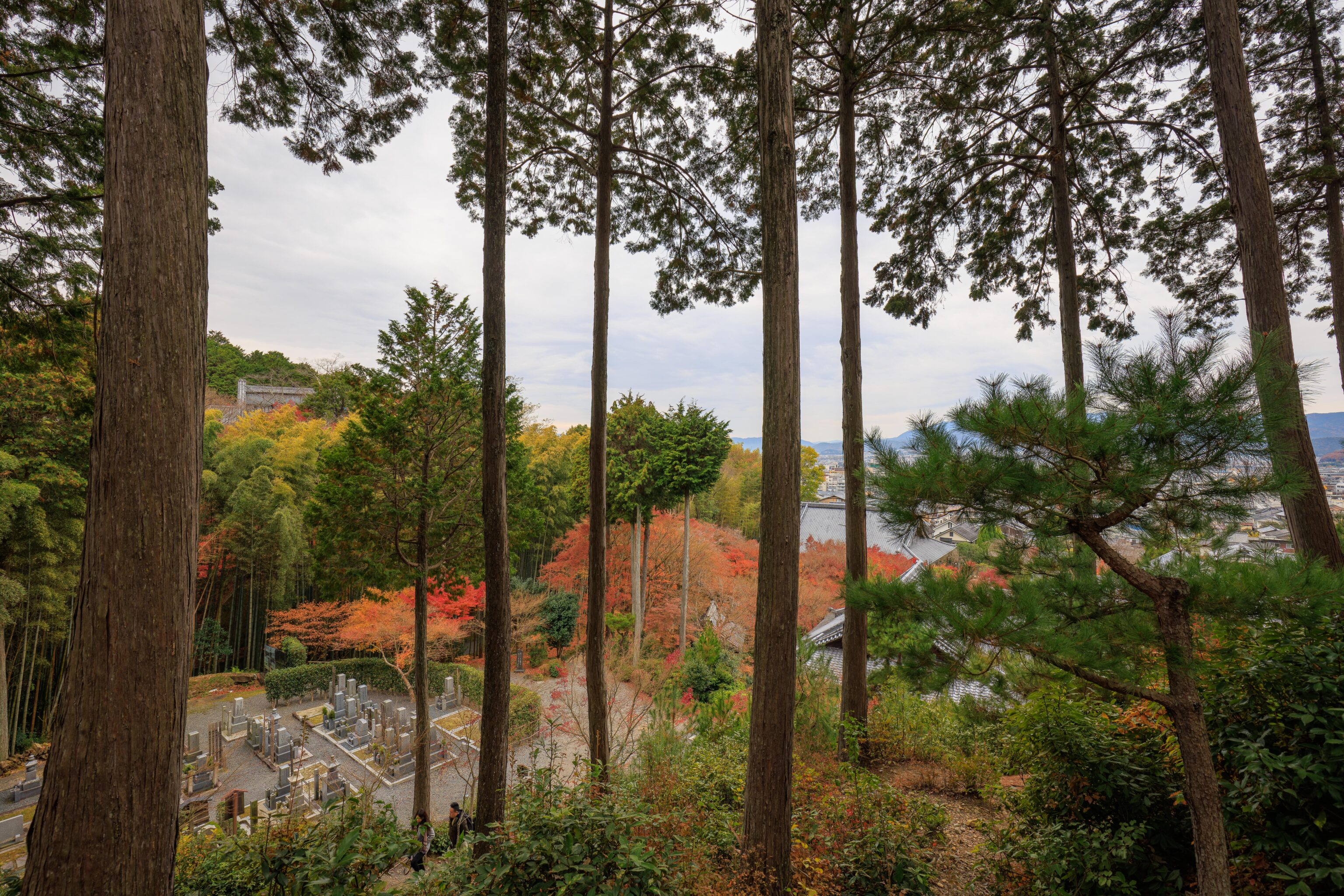


We continued walking past the shrine. This area overlooks the temple below as well as northeastern Kyoto.
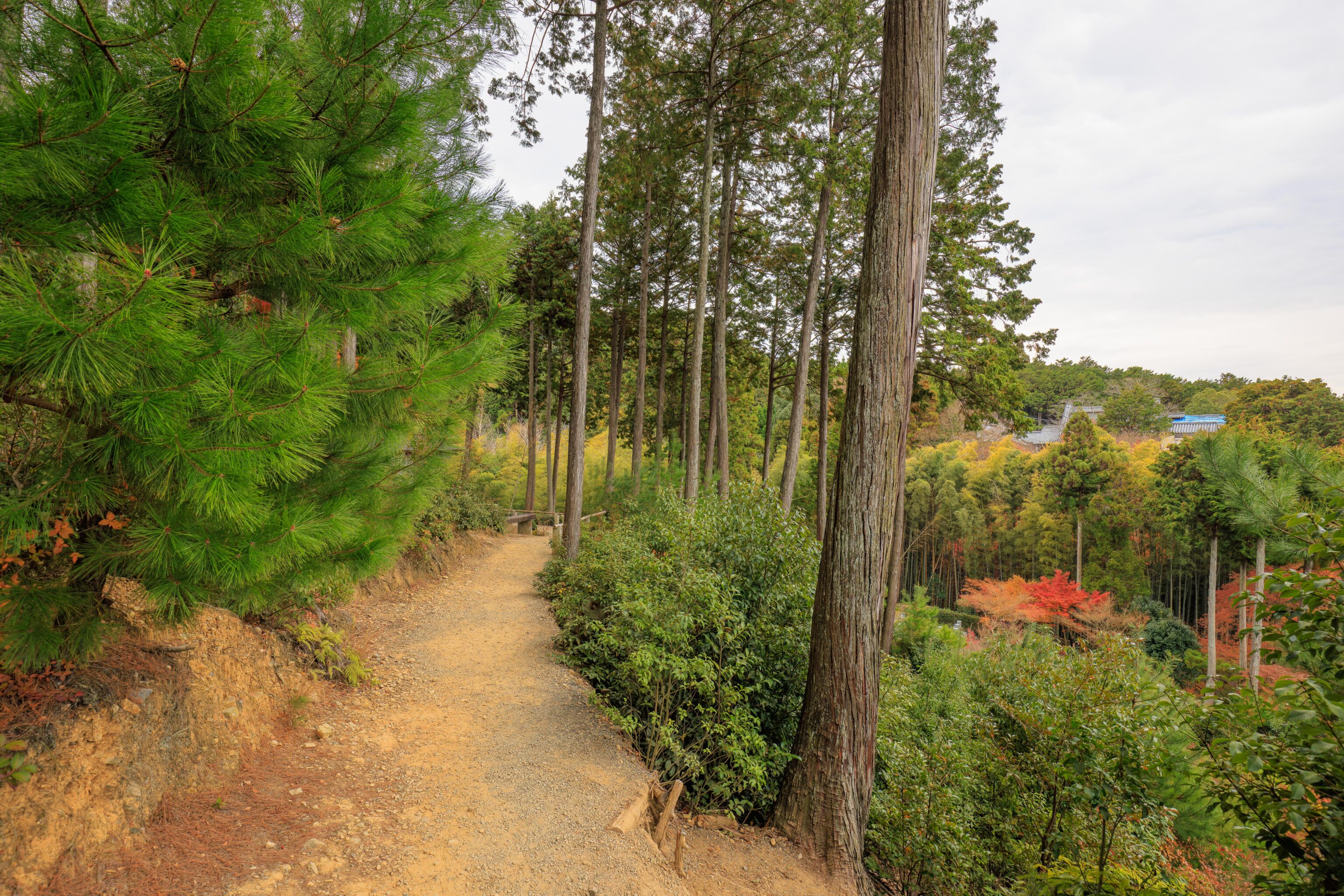
After going as far as we could go, we turned around and headed back.
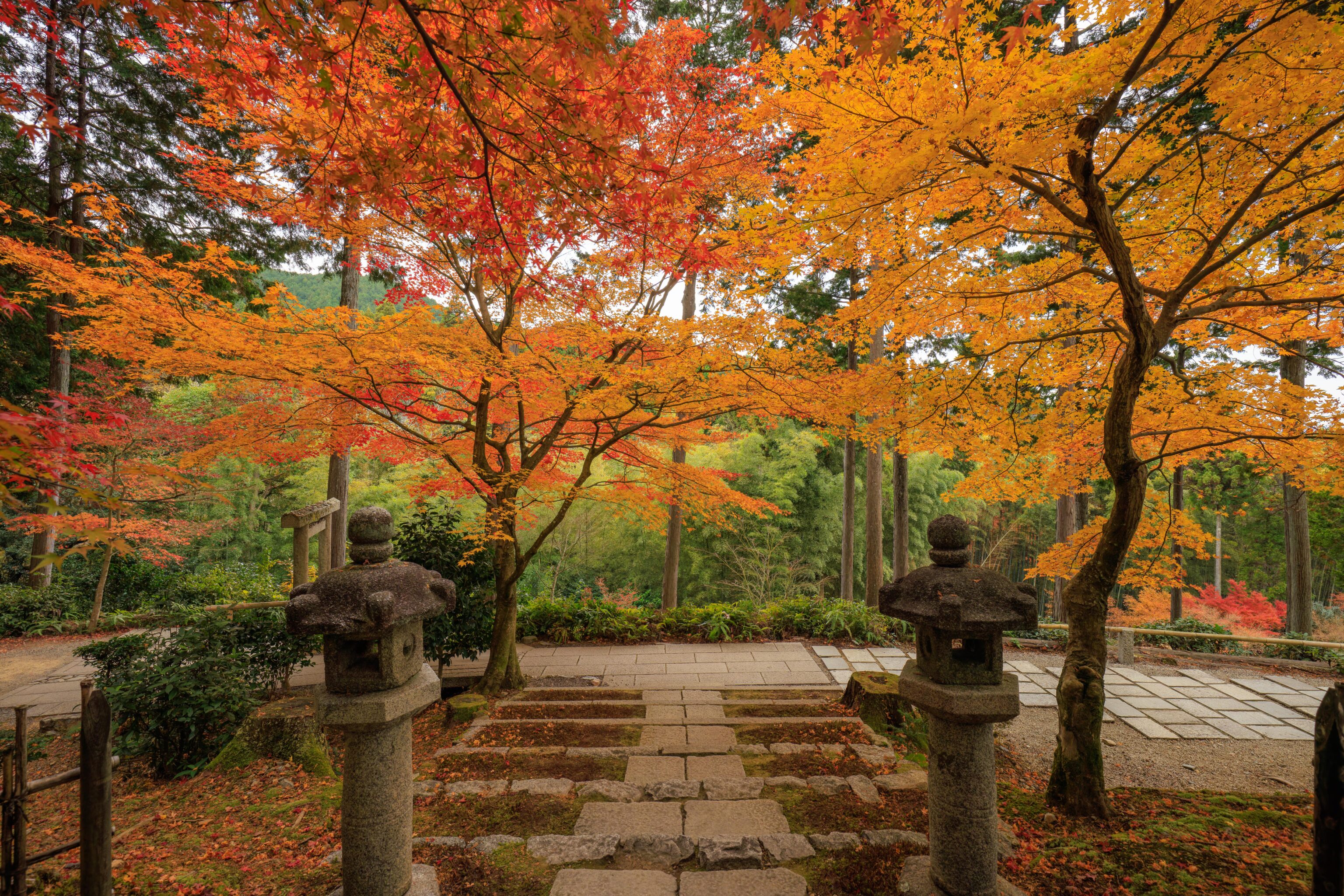

We took a closer look at the Shogun’s tomb. It is a nice spot.
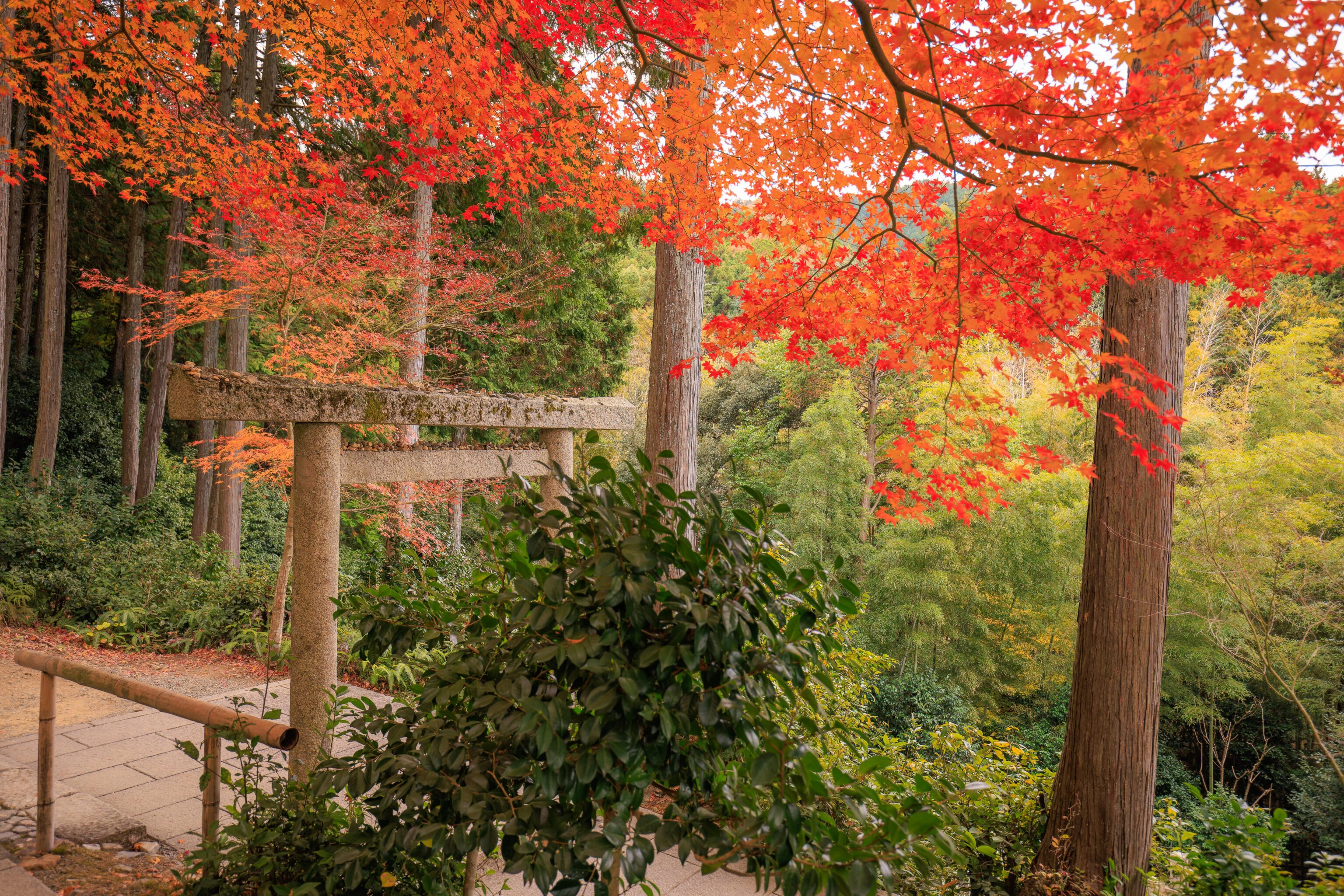
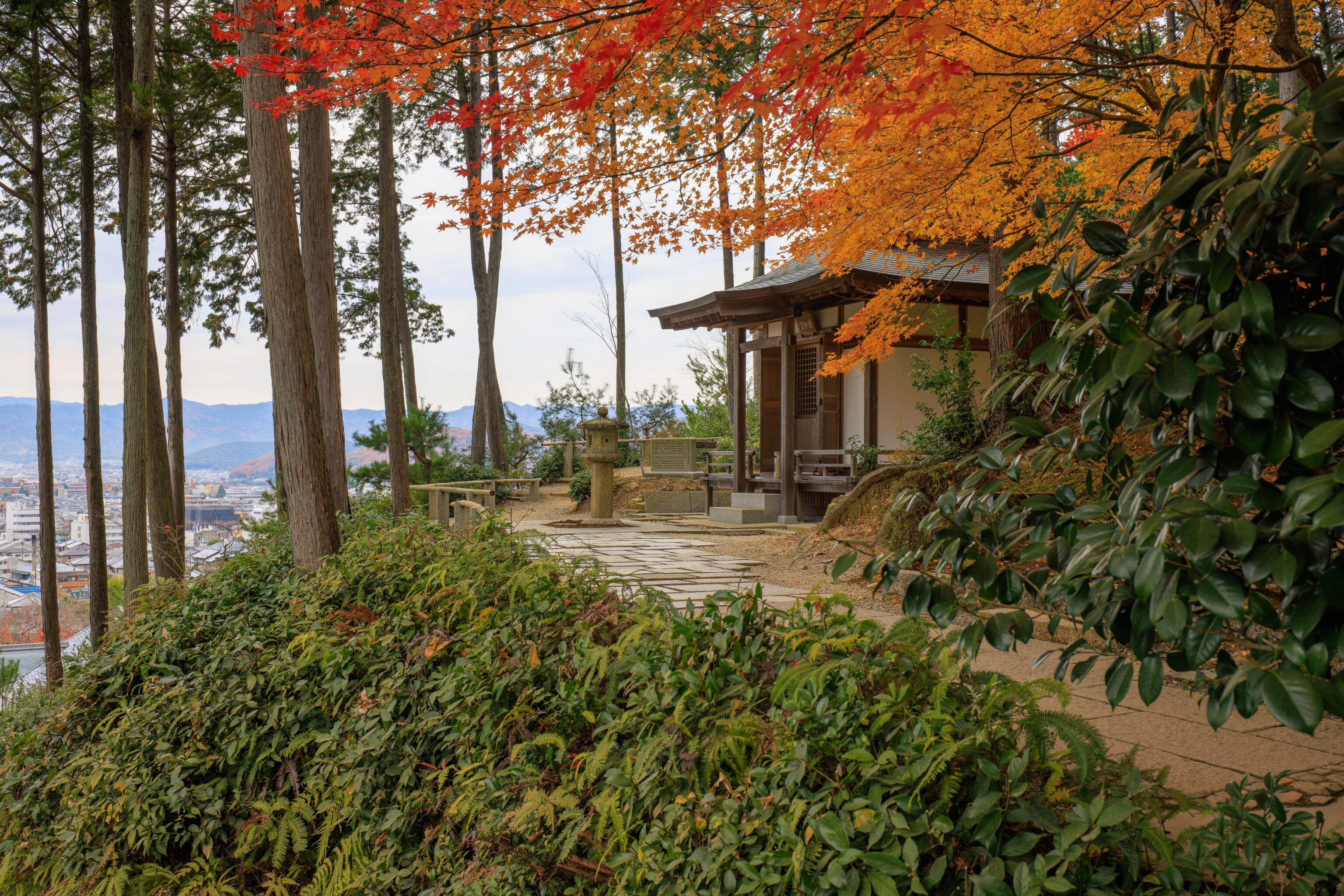
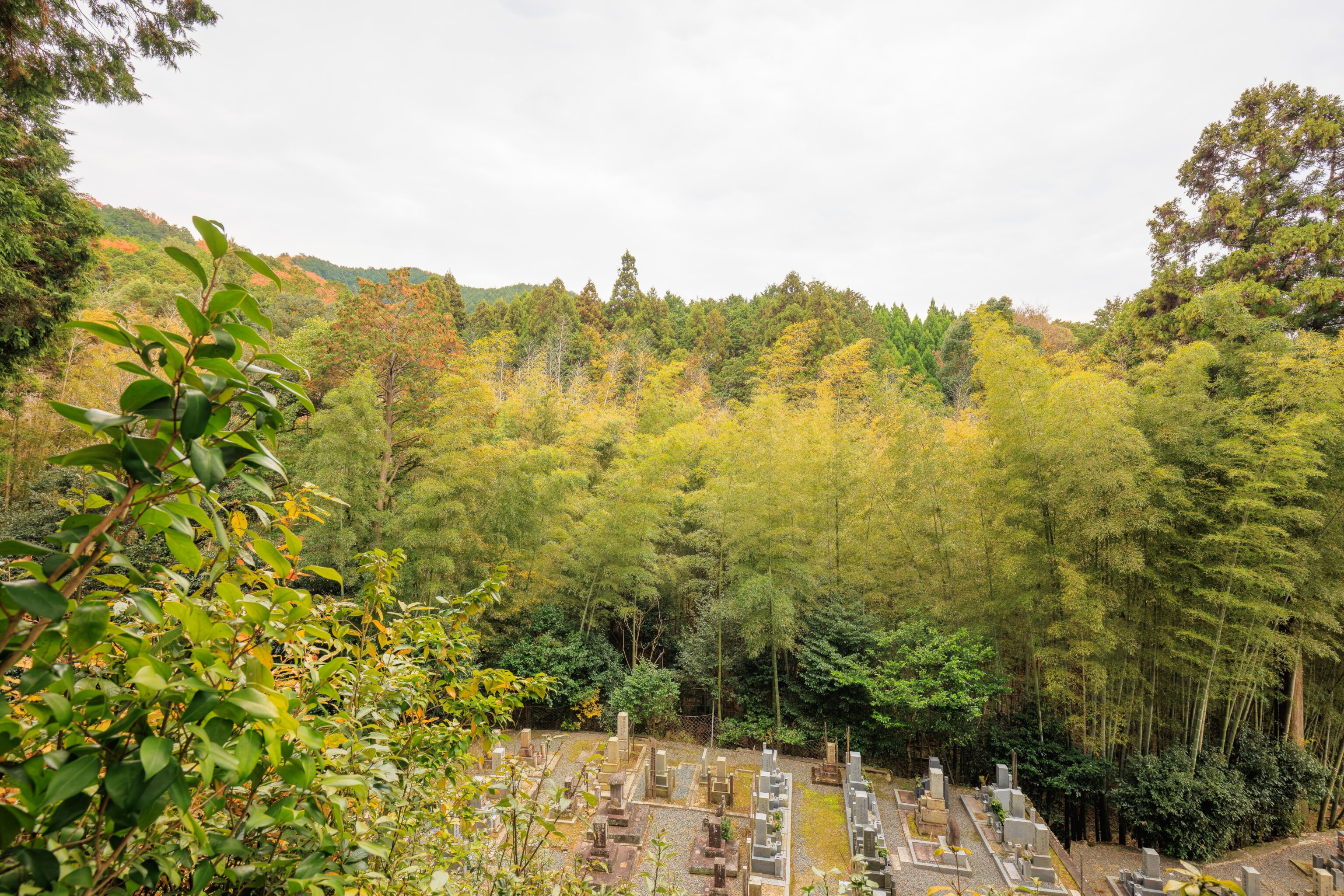
We walked back down the same way we came.
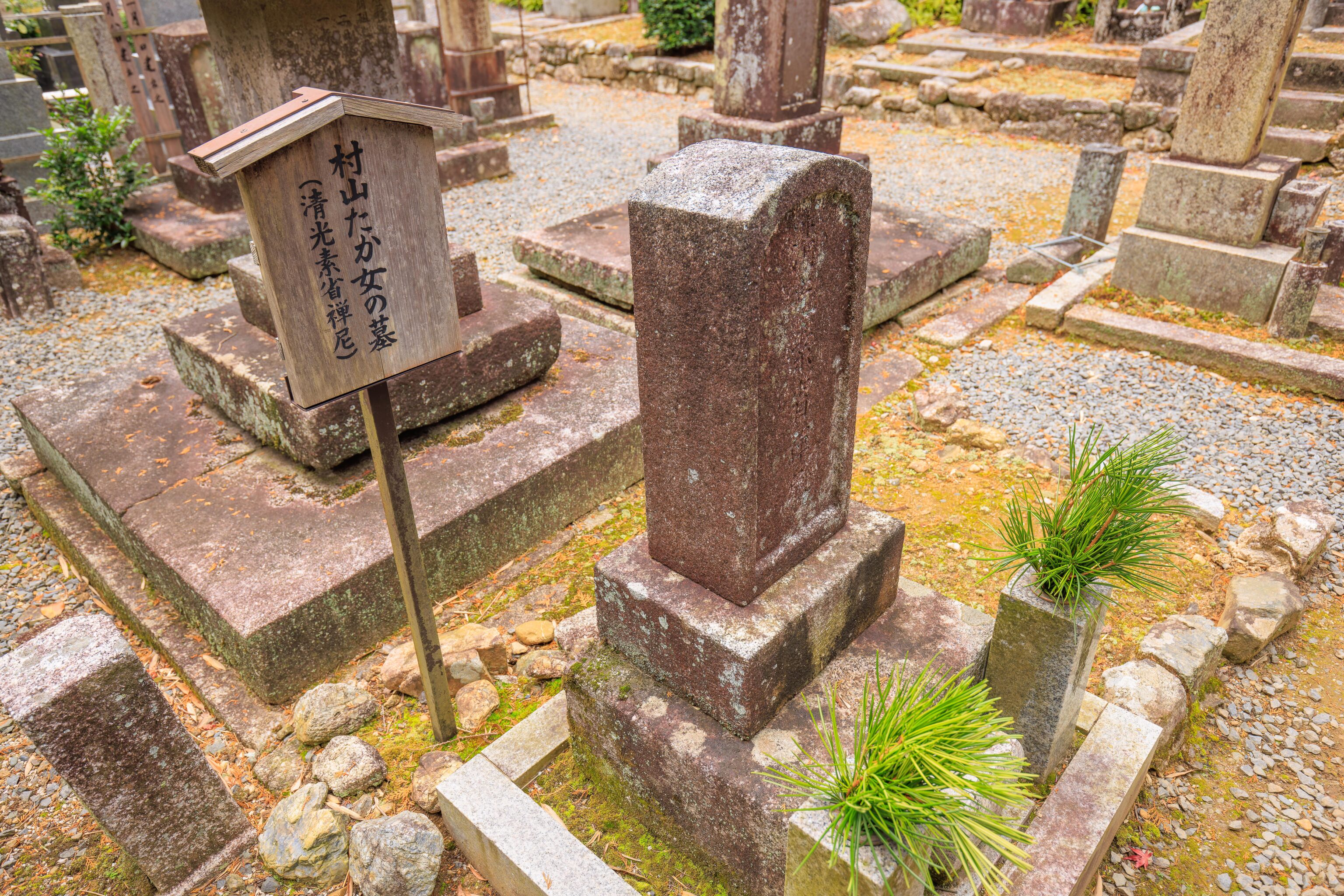
This is the grave of Murayama Takajo. The temple booklet has a brief narrative:
The temple cemetery contains the remains of Taka Murayama, known as the heroine from the novel "Hana no Shogai (Life of Flowers)" by Seiichi Funahashi
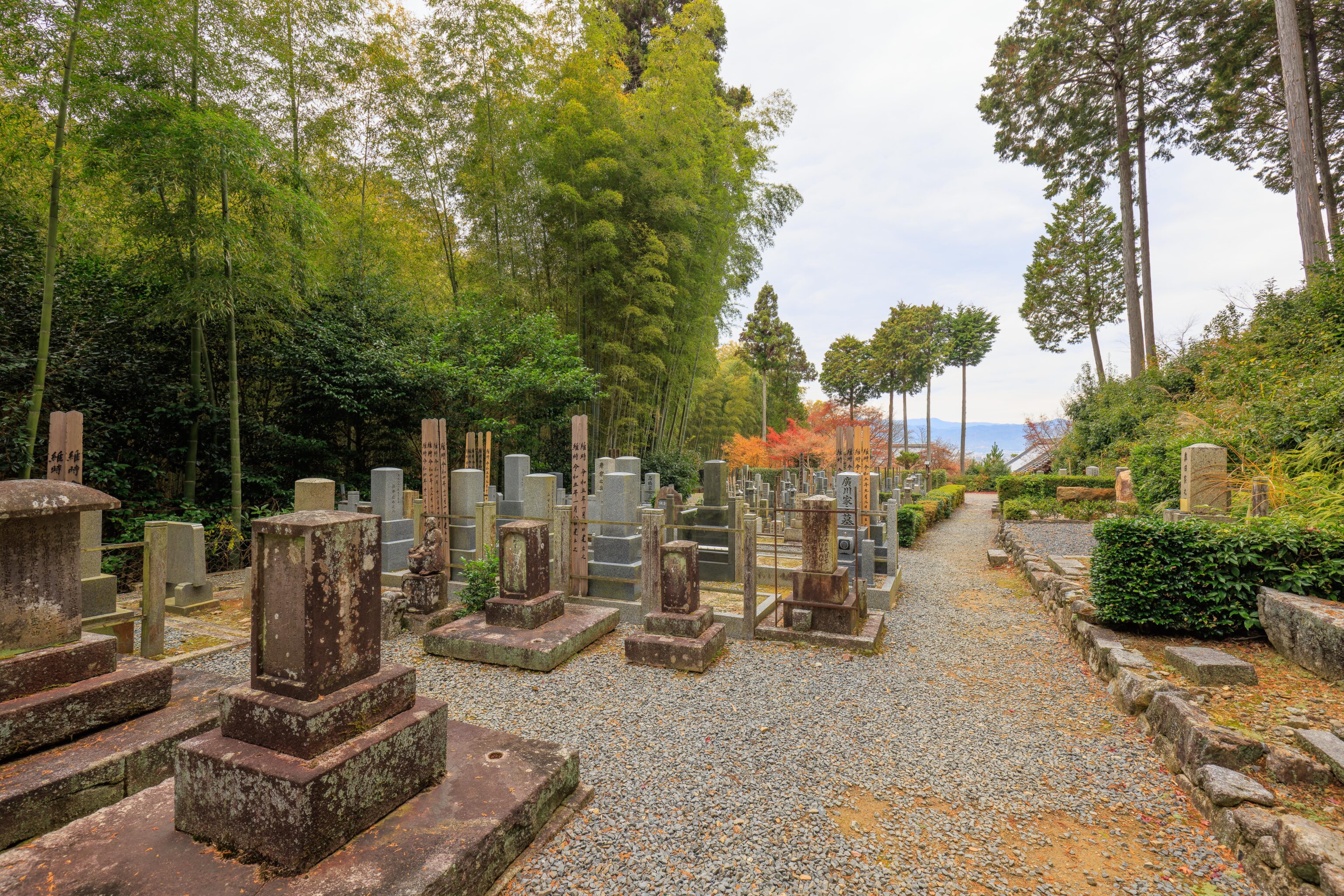


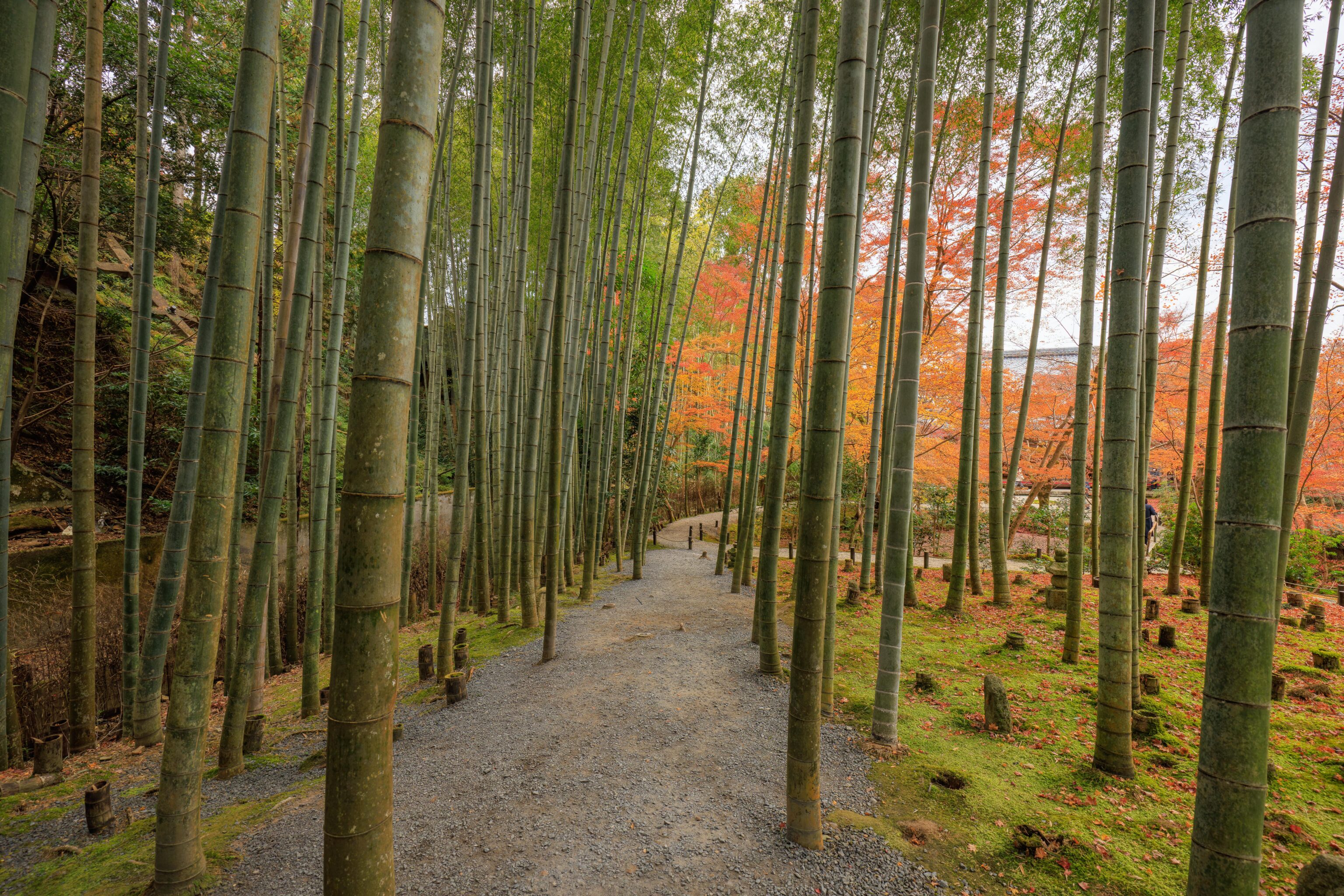
We continued on, heading down into the small bamboo forest that we saw earlier.

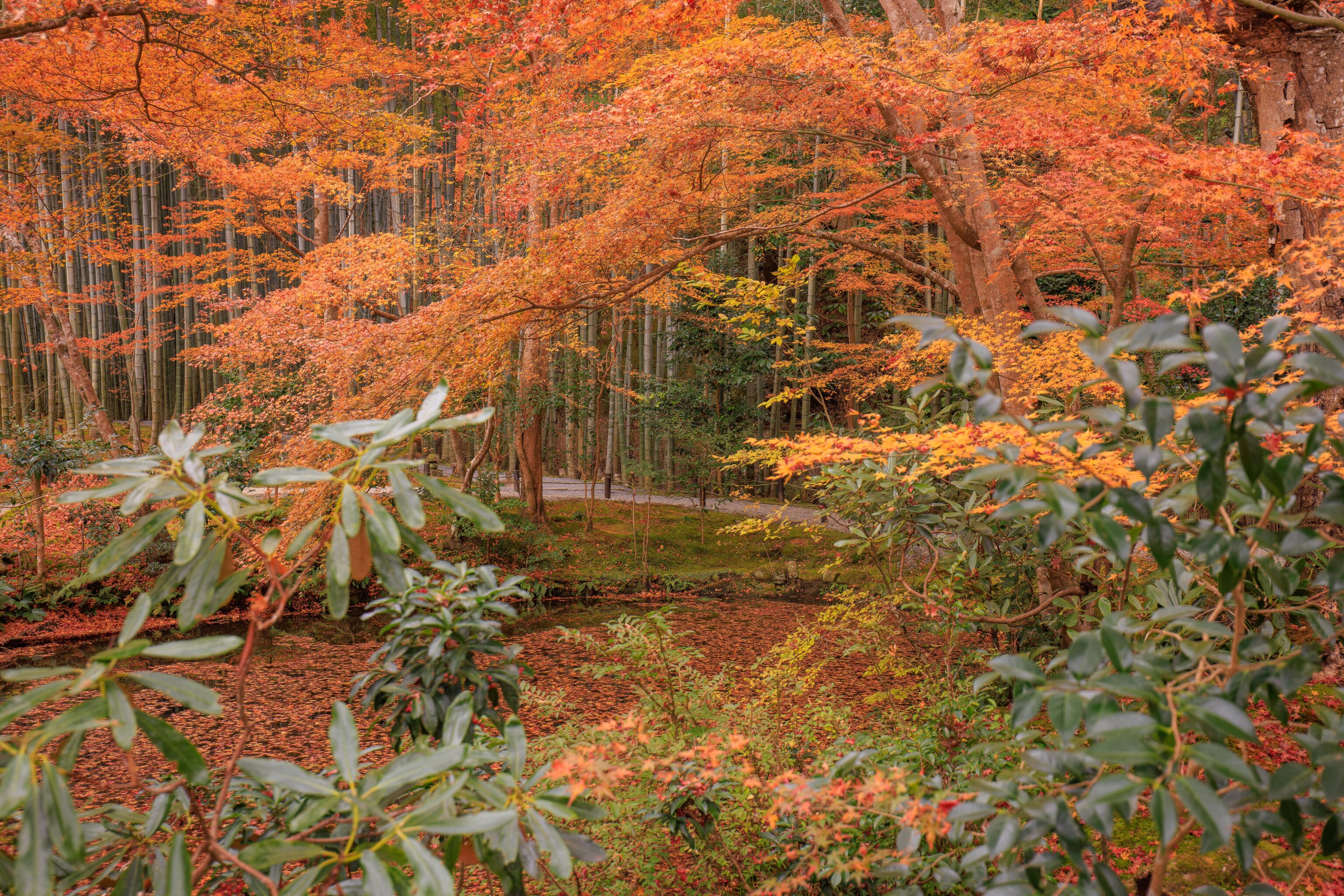
This pond, covered with fallen maple leaves, is described as the “oldest pond in northern Kyoto” by the temple’s booklet.
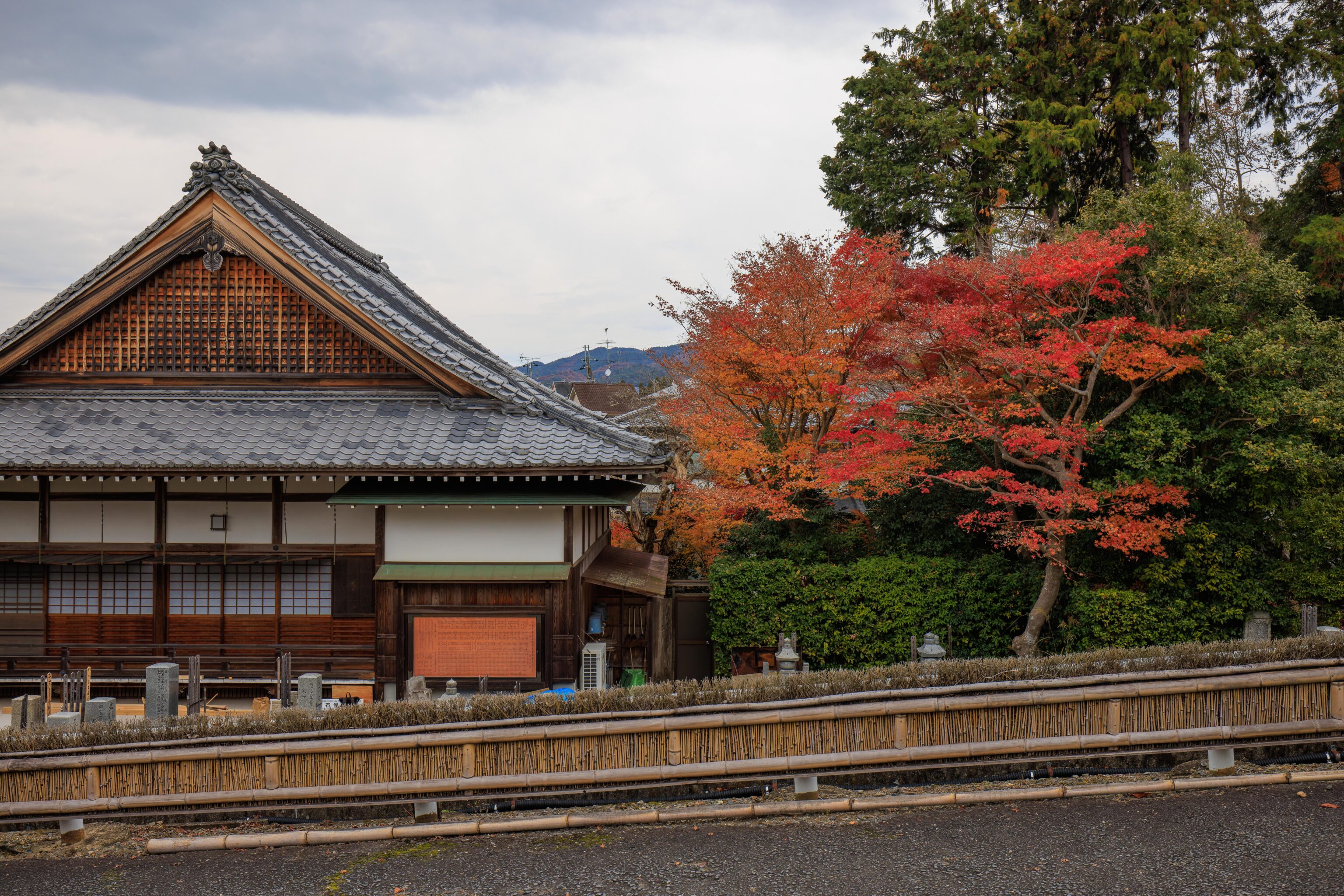
We ended our visit here, returning to the entrance to head to our next destination.
Shisen-do
詩仙堂 Shisen-do, another Buddhist temple, is nearby. It was formerly the retirement villa of a samurai.
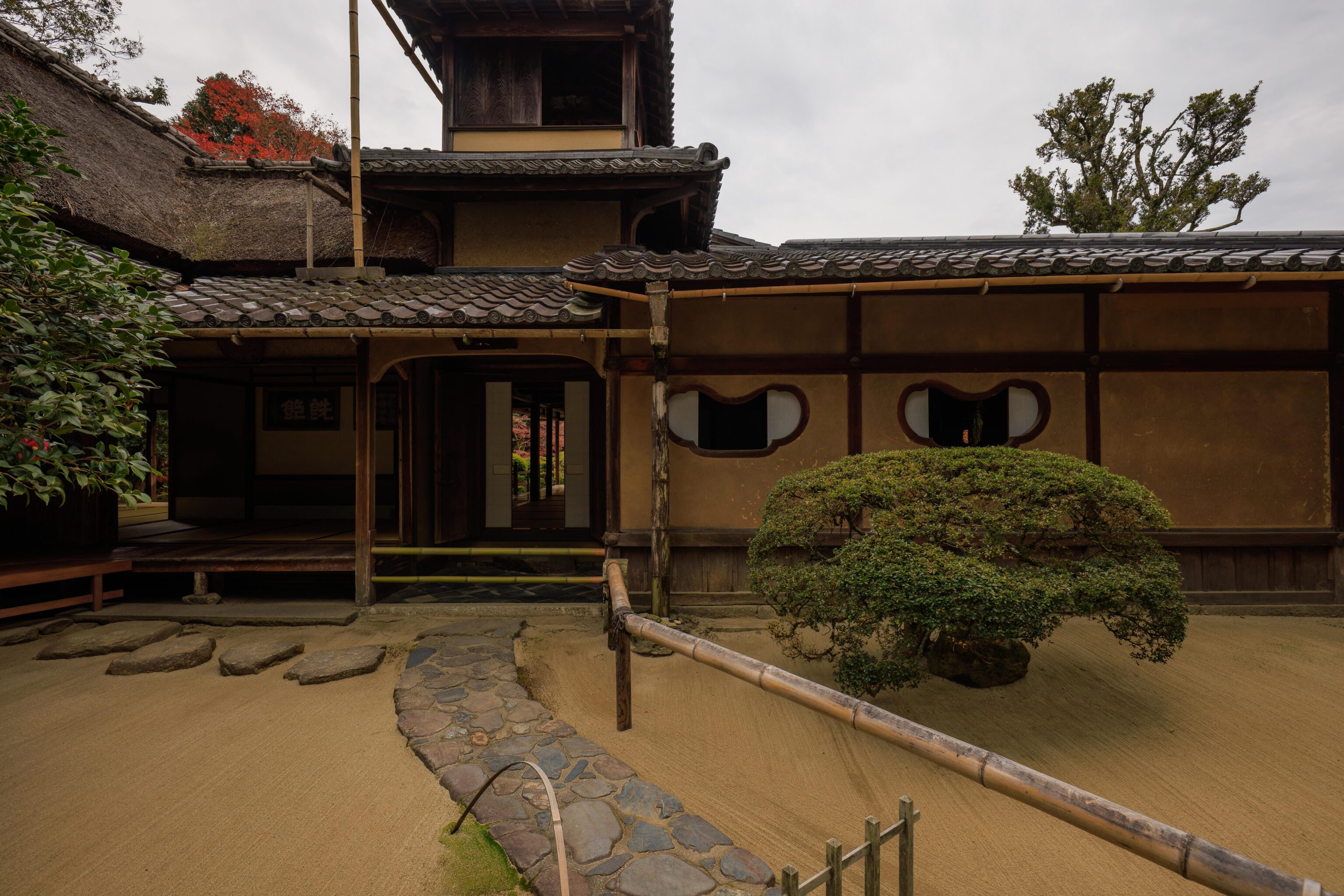

We arrived at Shisen-do after a short walk.


A Japanese language pamphlet was provided.
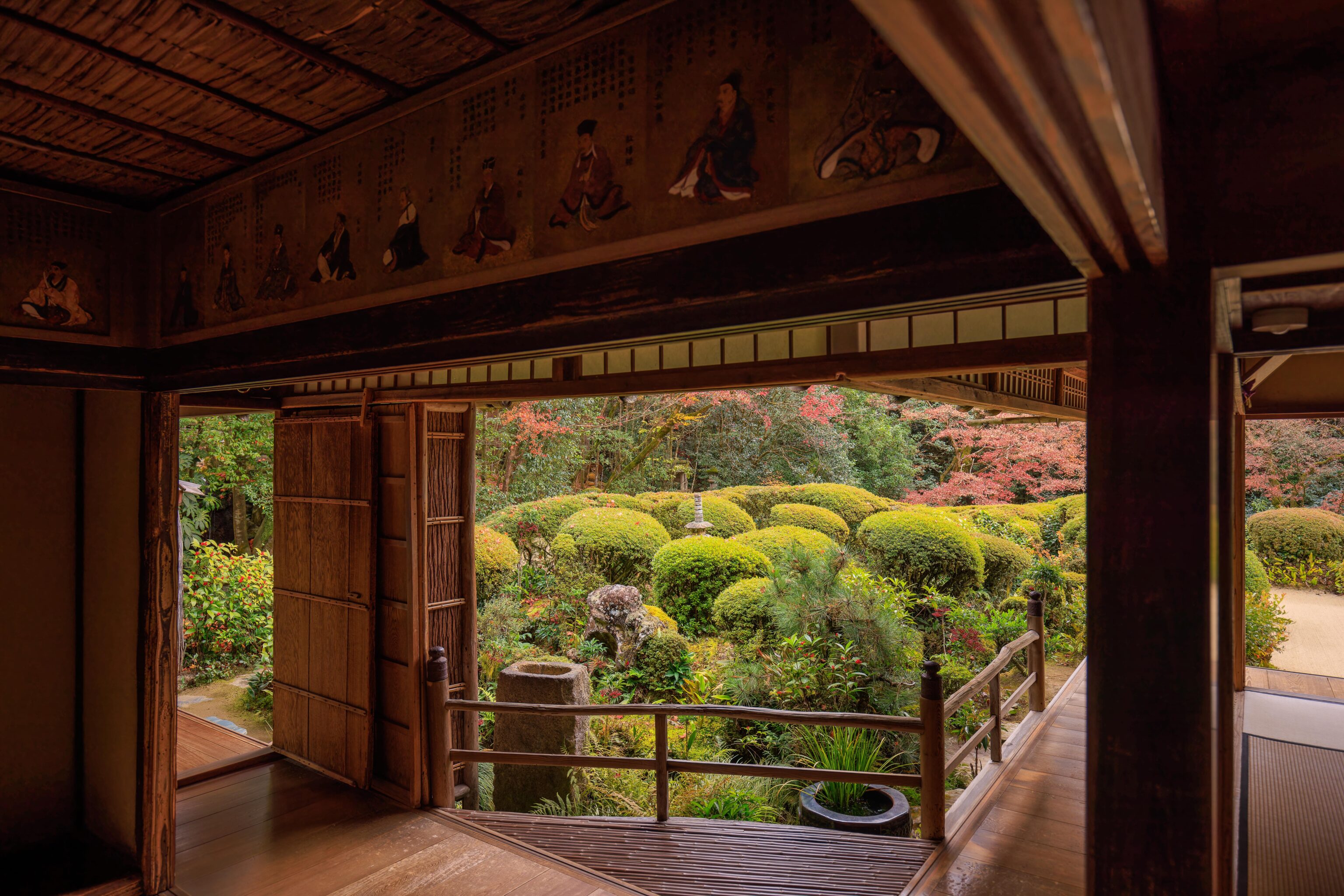
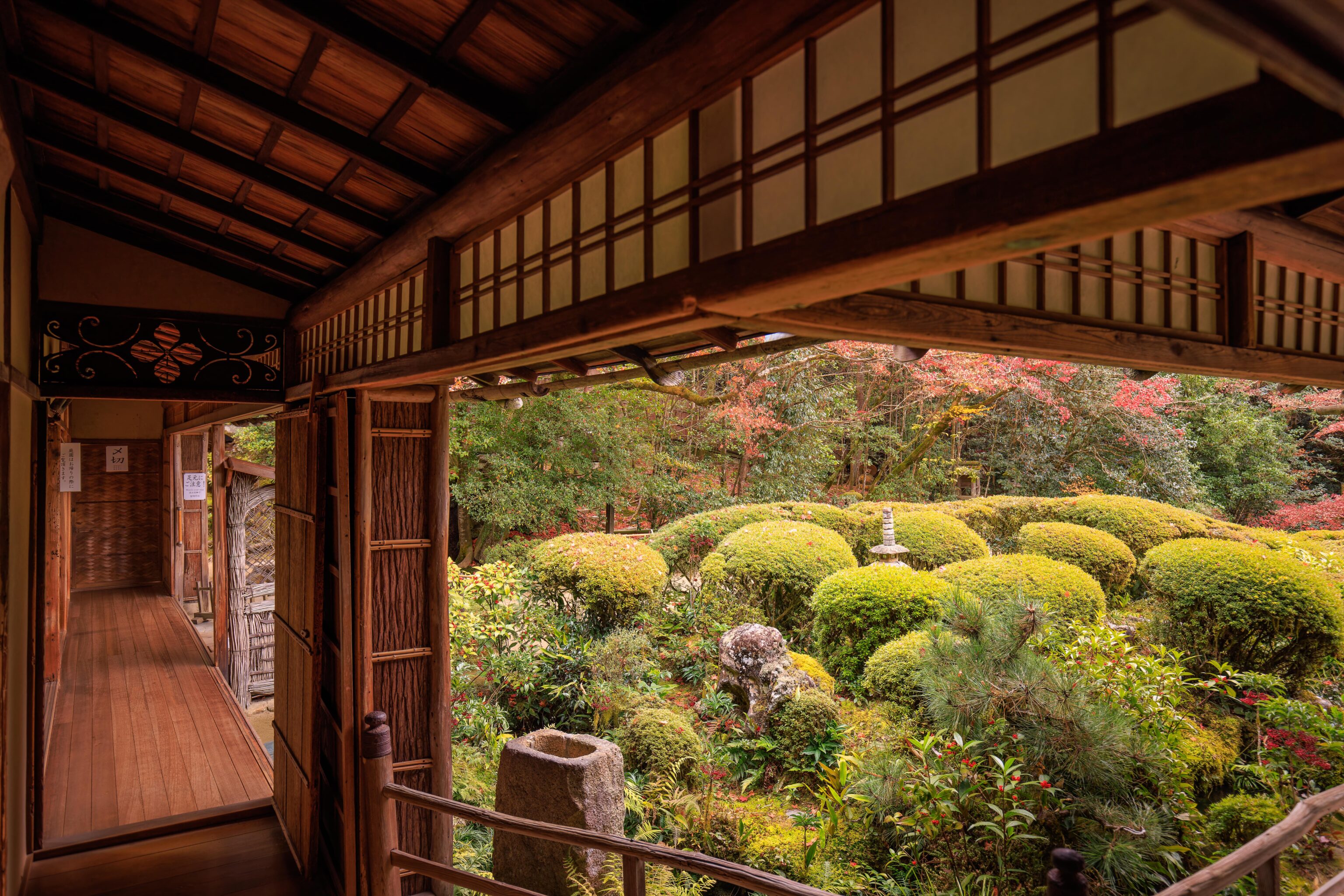



The first half of the tour route at this temple is the indoor spaces. The former villa has beautiful views of the adjacent garden. There weren’t very many visitors, making for a quiet experience.

The second half is outside in the garden area. This small building was at the eastern edge.

We walked to the west, where we had a view of the former villa.
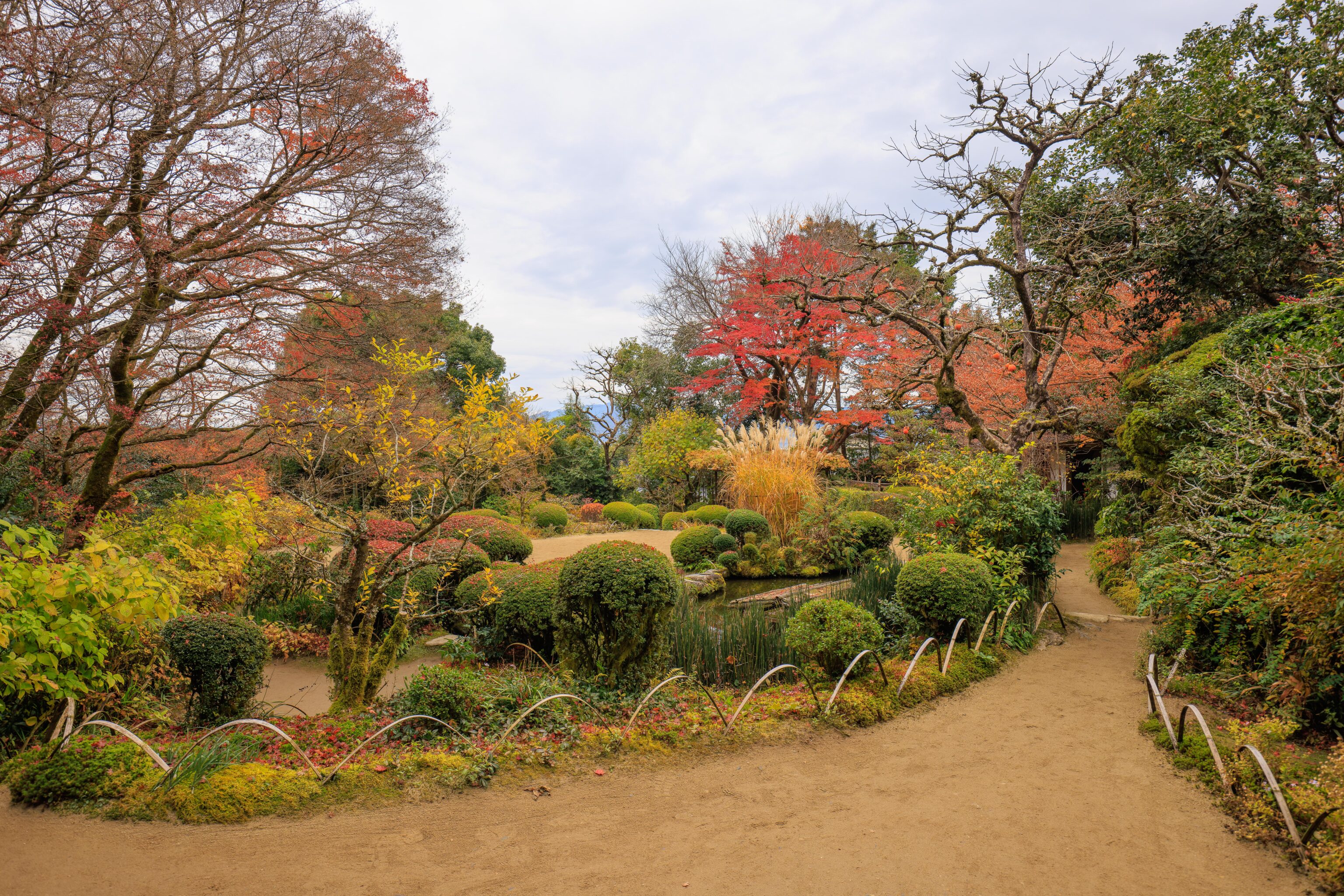

We saw a little bit of fall colors in the trees but most were either evergreens or well past peak.
The garden has a Shishi Odoshi, or more specifically, a Sozu. This simple device consists of a bamboo tube that is slowly filled with water, causing it to eventually tip over and empty its contents. The process then repeats. These devices were originally made to scare off wildlife but are now used as an aesthetic feature in gardens5. This is the first one we’ve encountered.

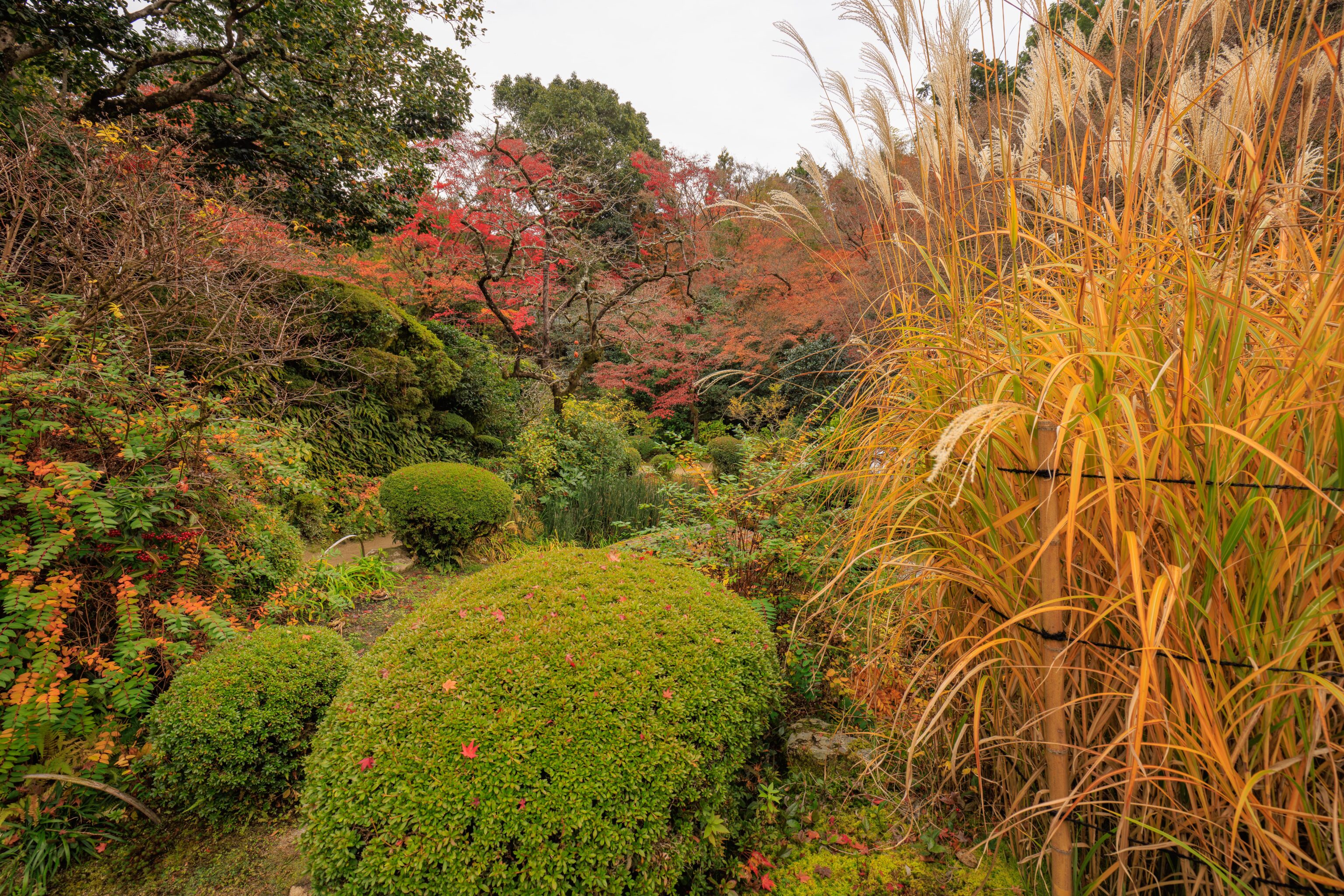
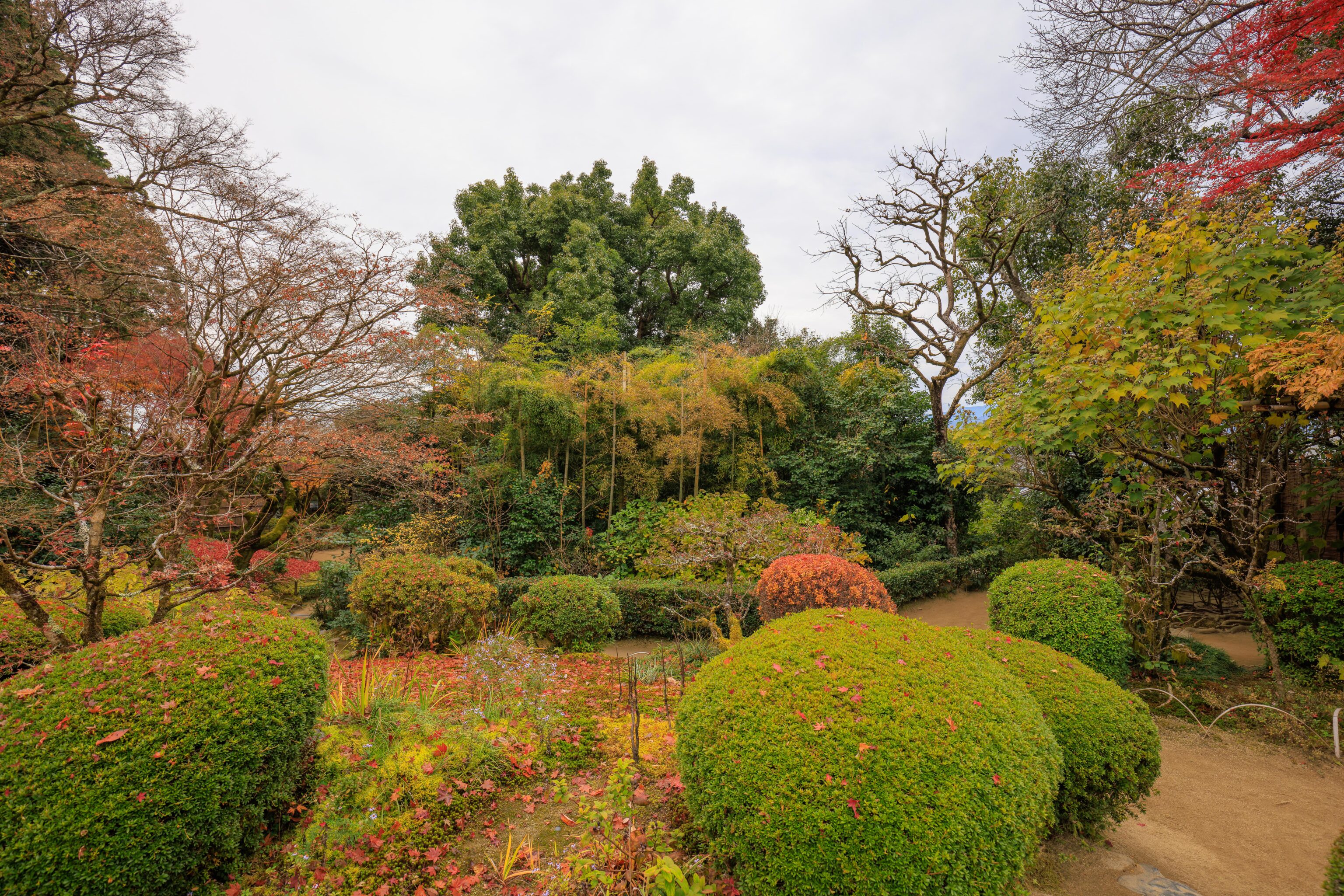




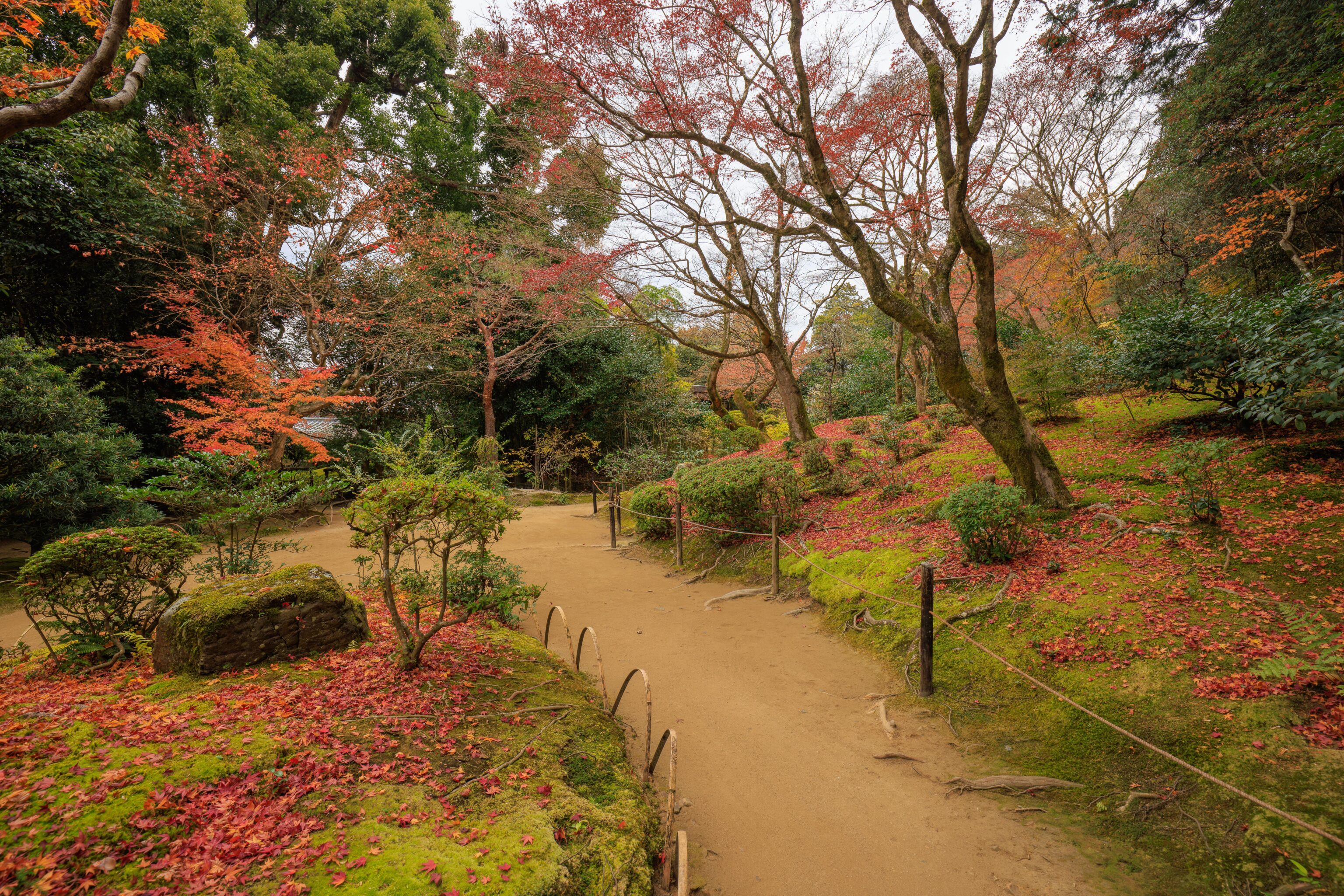





While the garden at Shisen-do isn’t particularly large, it was still much bigger than it seemed when viewed from the villa! There was quite a variety of foliage and landscaping.

The view looking back from the temple’s small inner gate as we exited. It looks like a face!

And, the view from the temple’s outer gate from the road.
Lunch
We started walking to Kani Doraku where we had a lunch reservation. The fastest way to get there is by bus but we were still very early. We decided to walk, hoping to perhaps have some snacks on the way.



We first walked to the west to return to Shirakawa-dori, the same road that we started from after getting off the bus this morning. This road runs all the way south to the Keage Incline and leads to many of Kyoto’s eastern mountain temples and shrines.
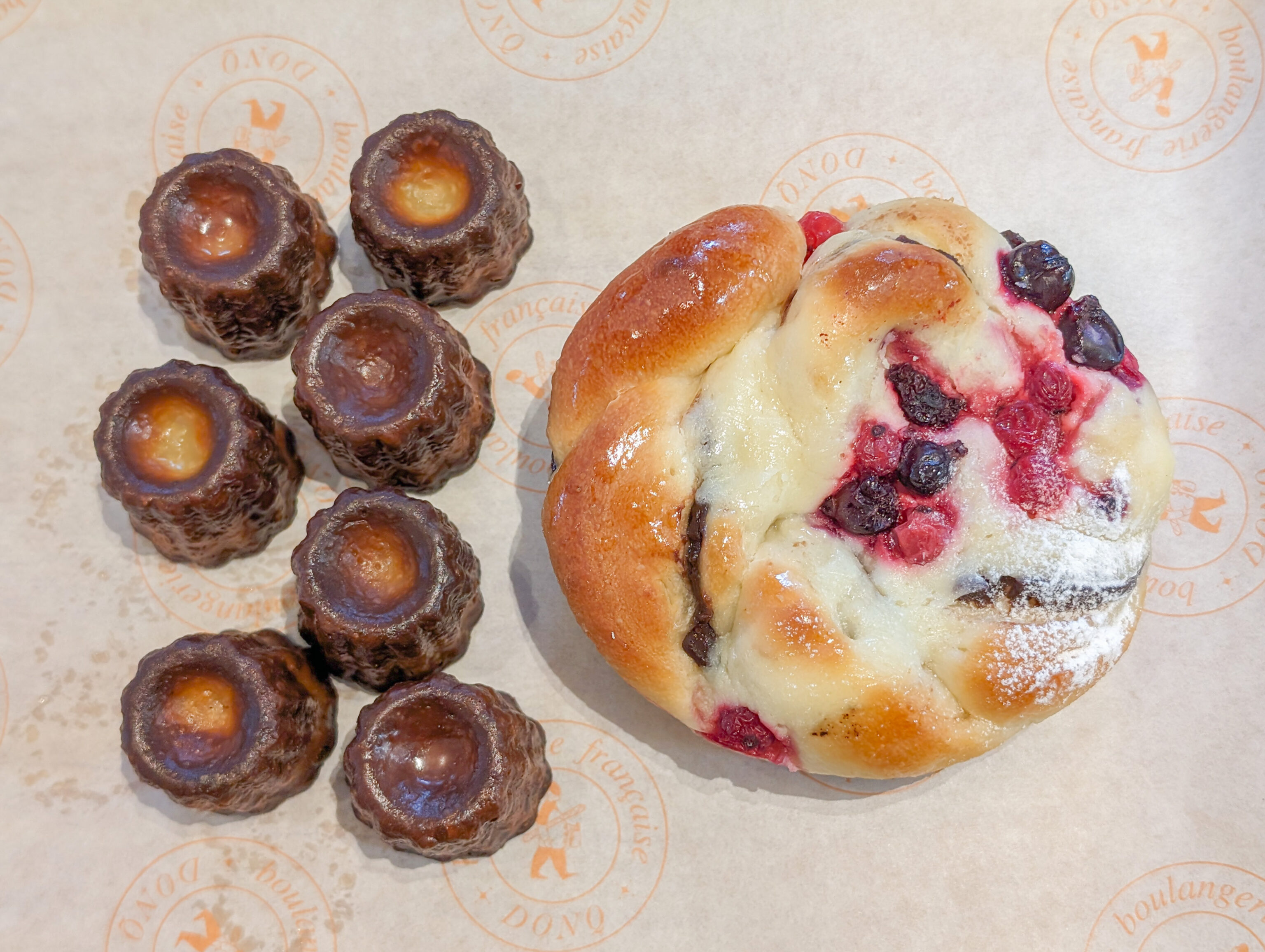
We decided to stop in at DONQ, a Japanese French bakery and cafe. We chose this place because it was possible to have a light pre-lunch snack and sit down.
Kani Doraku
Soon, it was time! We walked six or so blocks to reach Kani Doraku. Kani Doraku is a well known Japanese crab restaurant chain. Their most famous restaurant is at Dotonbori in Osaka and features a giant moving crab on the storefront. The Kita-Shirakawa location is much less busy as it isn’t in a particularly prominent location. It also doesn’t have the giant moving crab signage.

The interior was quite nicely done with a rustic appearance. The seating area by the windows were made to look like they had a thatch roof! The large windows overlooked a small narrow garden.
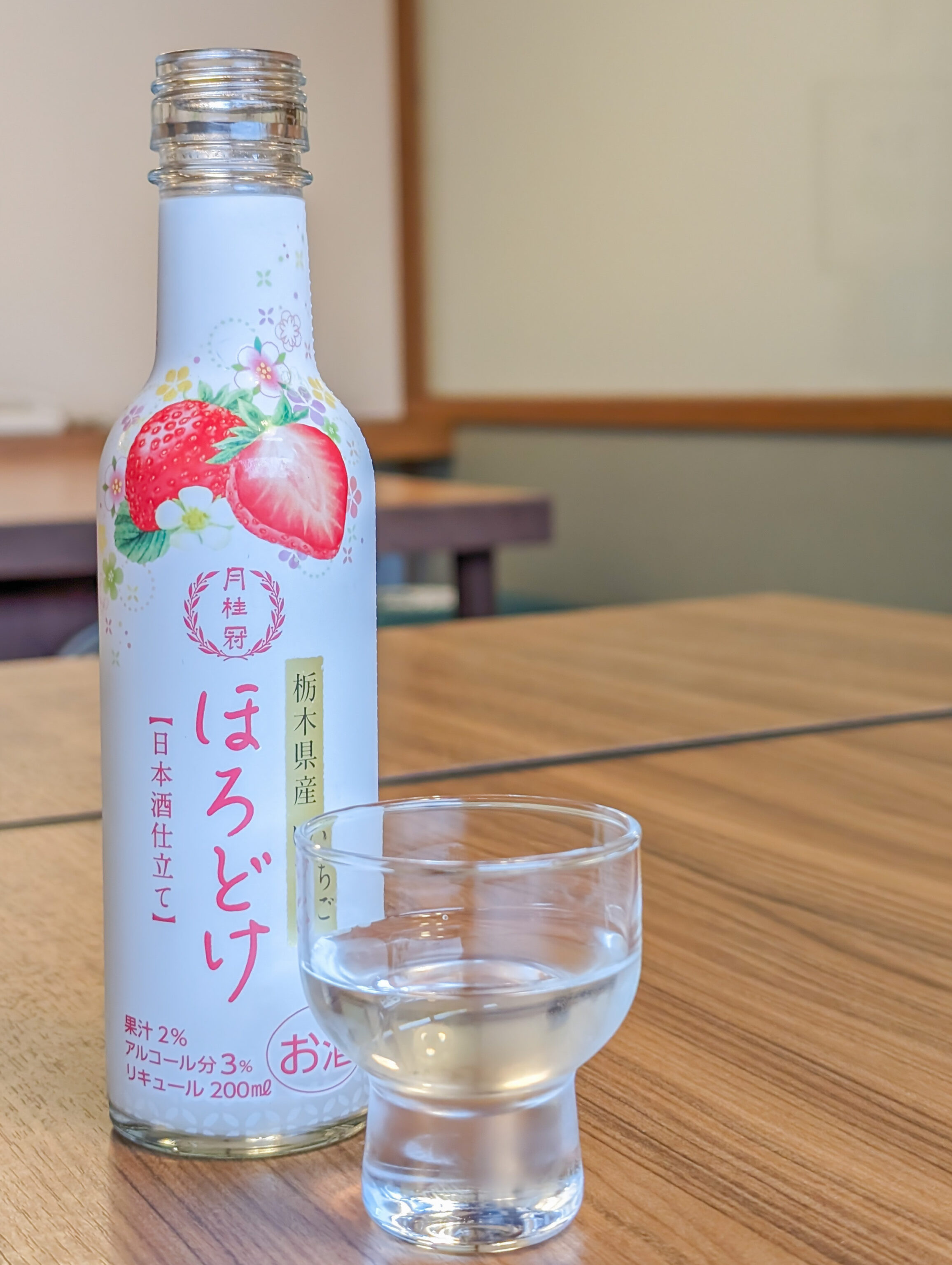
Kani Doraku’s menu is vast. There are so many options! There are many sets to choose from as well as a la carte options. There were also seasonal specials. It is a bit overwhelming!
As Kani Doraku’s specialty is crab, we wanted to try as many different types of preparation as possible. We ordered one of the seasonal sets as well as some individual items.



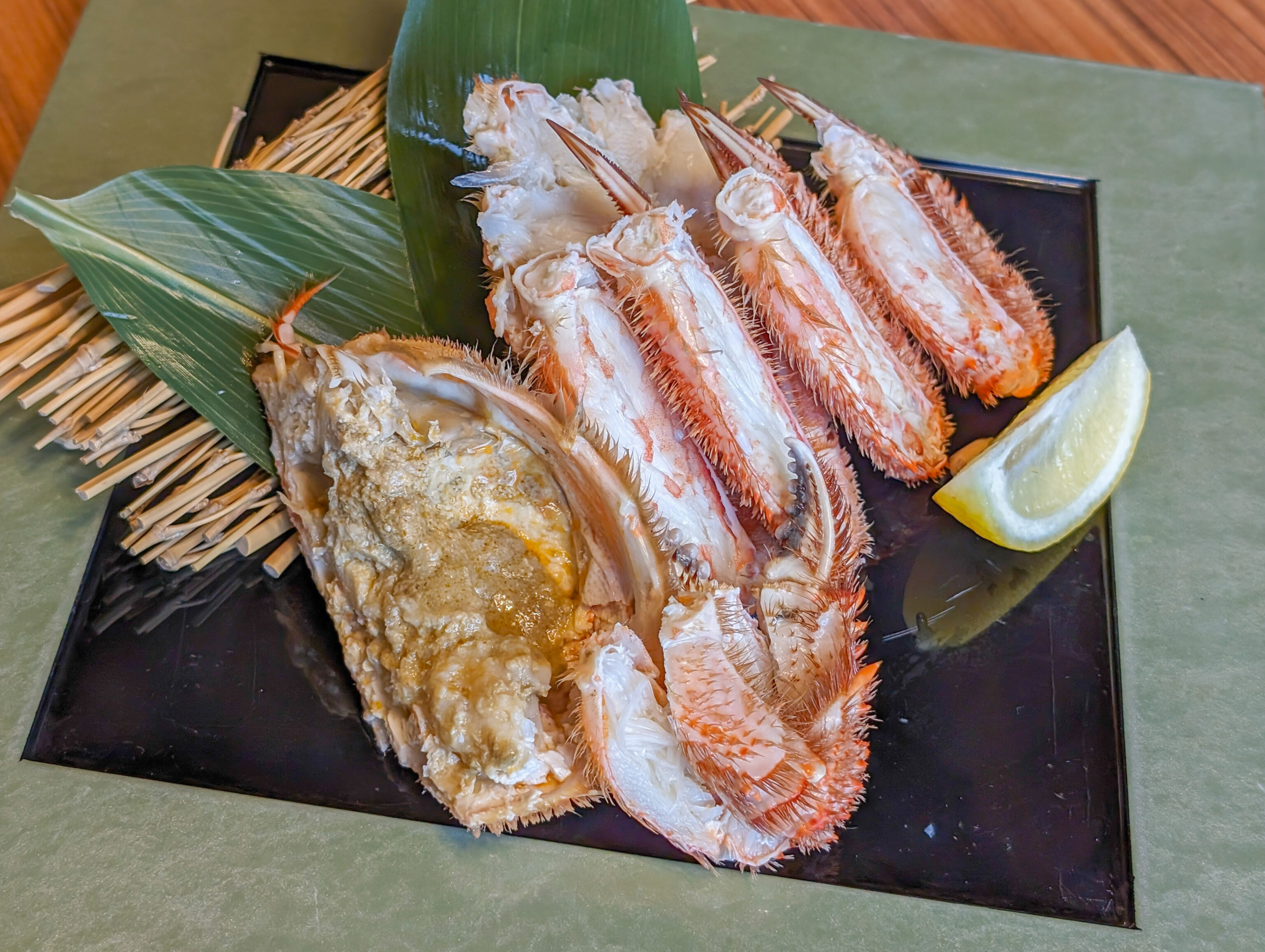







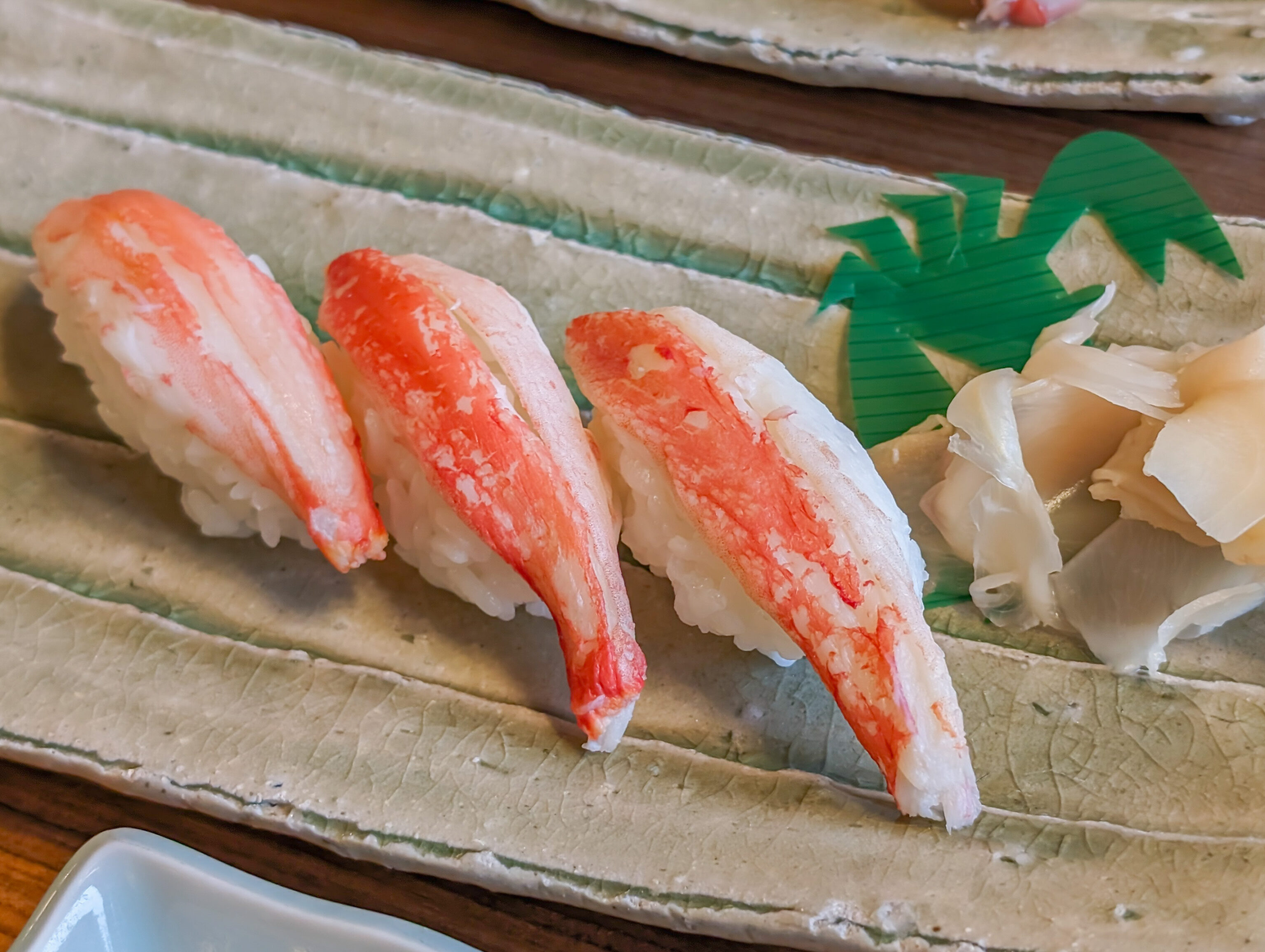


It was a fantastic meal! It is hard to say what the best was, but the deep fried crab was surprisingly good. A nice exterior and still very tender and flavorful crab inside. Some of the raw pieces were incredibly tender, particularly the leg sushi pieces, and basically just melted upon eating. The crab croquettes were interesting because the interior crab paste was so soft. It is what McDonald’s seemed to be trying for with their breakfast Gracoro, which we had yesterday, of course, this was much better!
Shimogamo-jinja
It was around 3pm when we finished our late lunch. We decided to head over to 下鴨神社 Shimogamo-jinja by bus as it wasn’t too far away. The formal name of this Shinto shrine is 賀茂御祖神社 Kamomioya-jinja.

We first had to cross the Takano River after after getting off the bus.
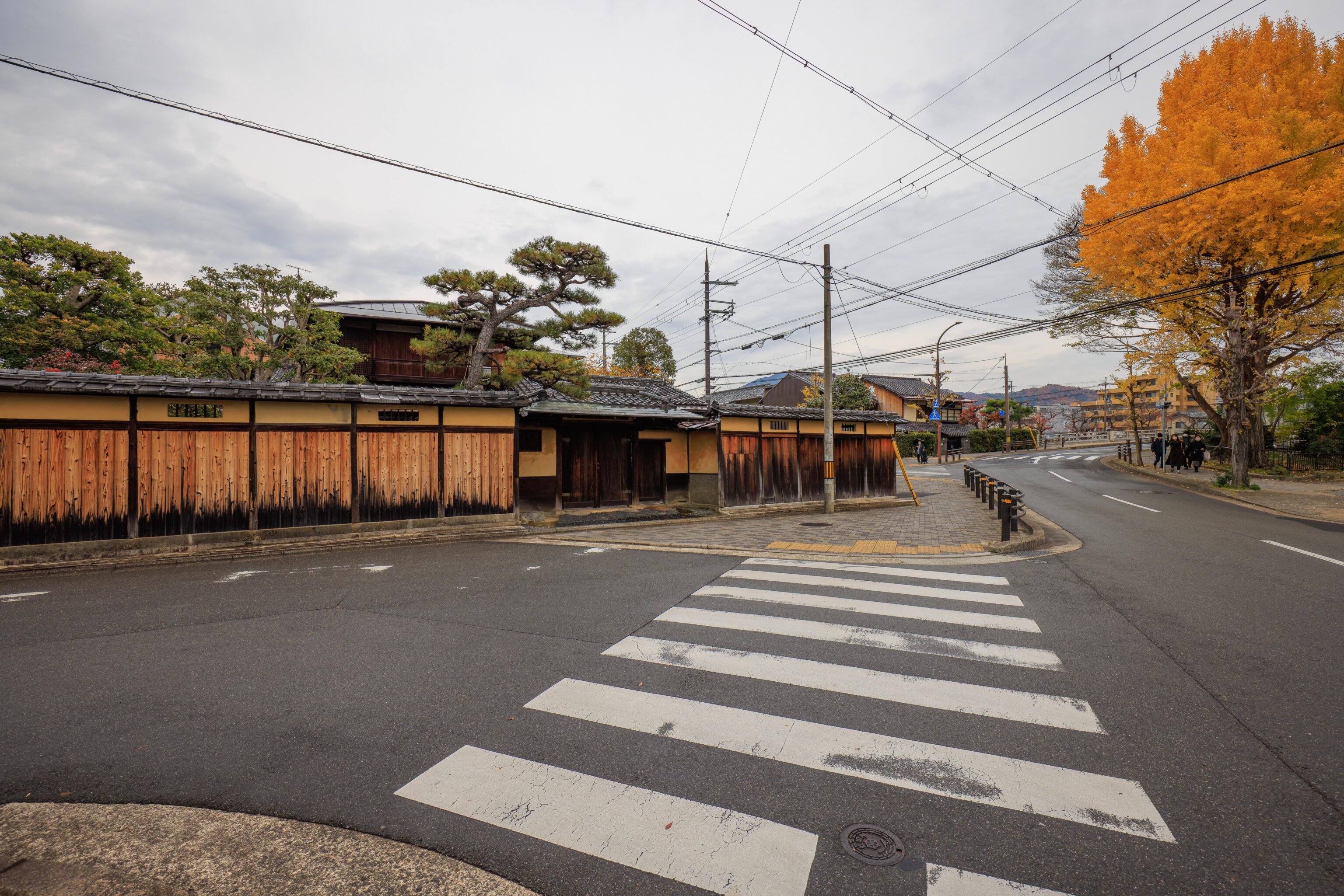
Just a random corner near the temple.

The road crossed a small stream at the eastern edge of the shrine’s property.

Soon, we reached the main path into the shrine. It is actually behind us. The path to the south has a tiny torii blocking the way, probably so there is no confusion that this is a pedestrian path rather than a road.

We followed the path to the north, into the shrine.


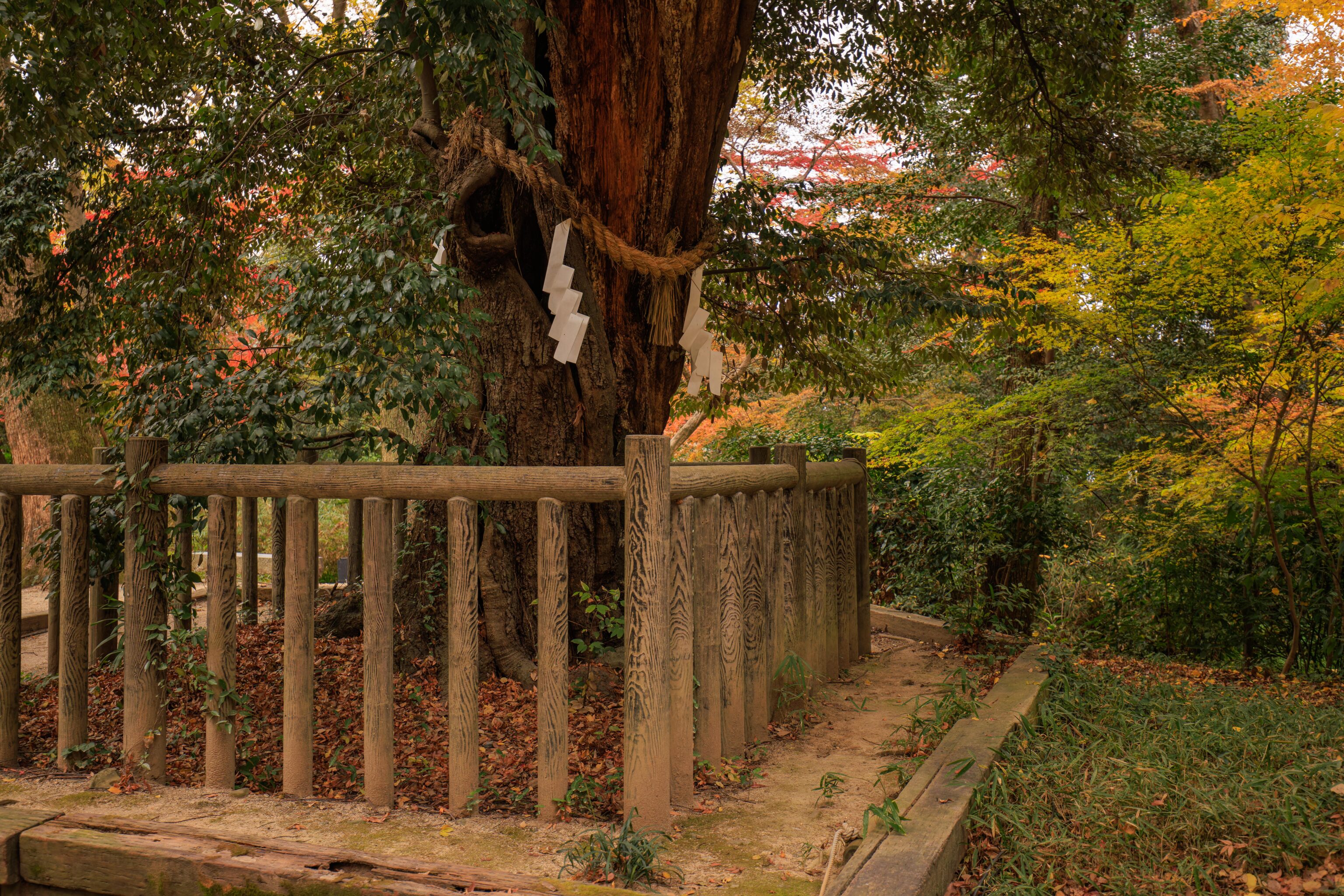

The path runs north through the woods for awhile. A parallel path to the west had some smaller Shinto shrines but this side did not. We did see lights that are for the evening illumination event that is held here from December 2nd through December 17th6.

We eventually reached a large torii.

Shimogamo-jinja is part of the Historic Monuments of Ancient Kyoto World Heritage Site. We’ve visited many of the 17 locations, on this and previous trips, that make up this World Heritage Site. Perhaps we should try to visit all of them?

We walked under the torii.
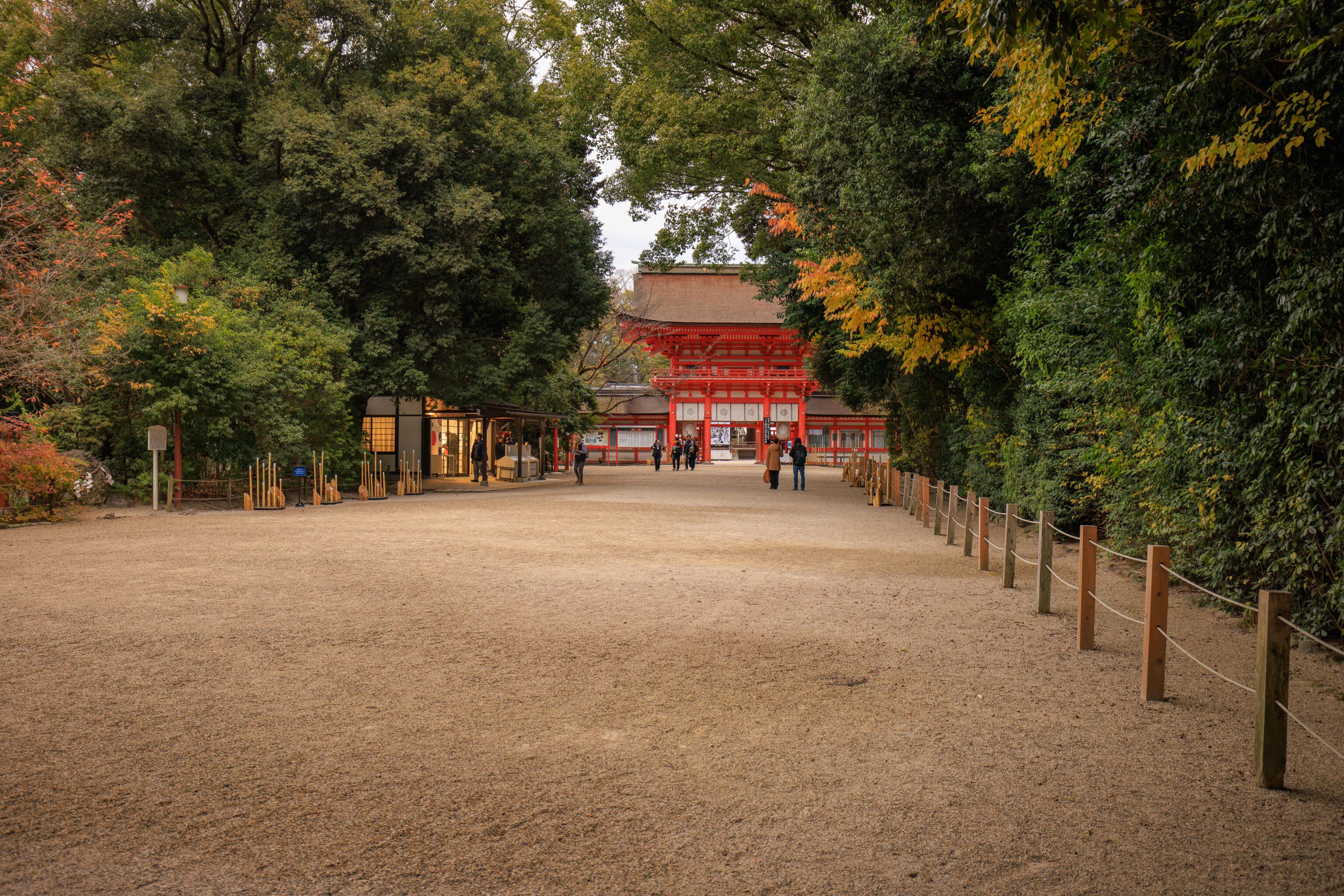
We could see the shrine’s main buildings in front of us.
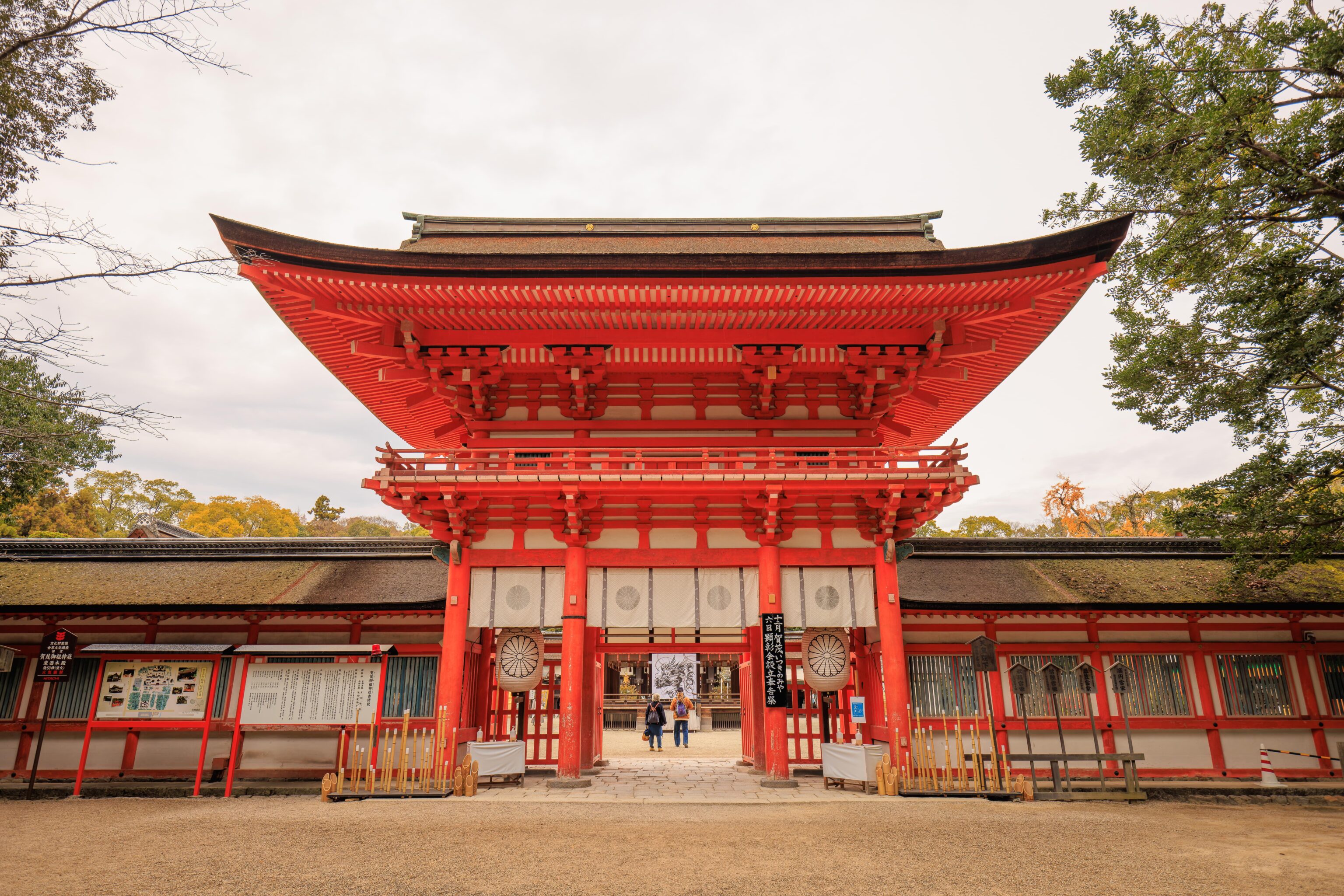

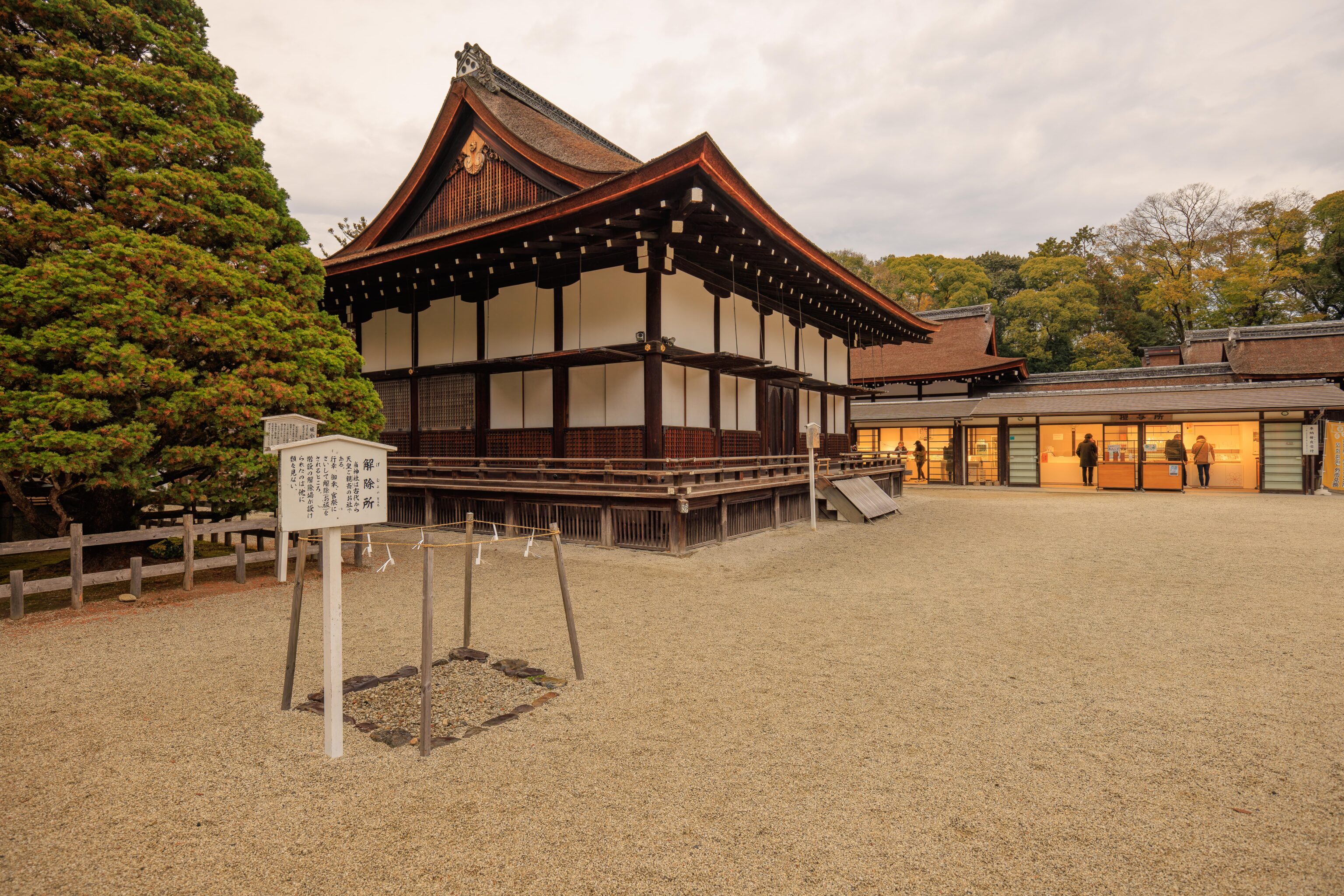

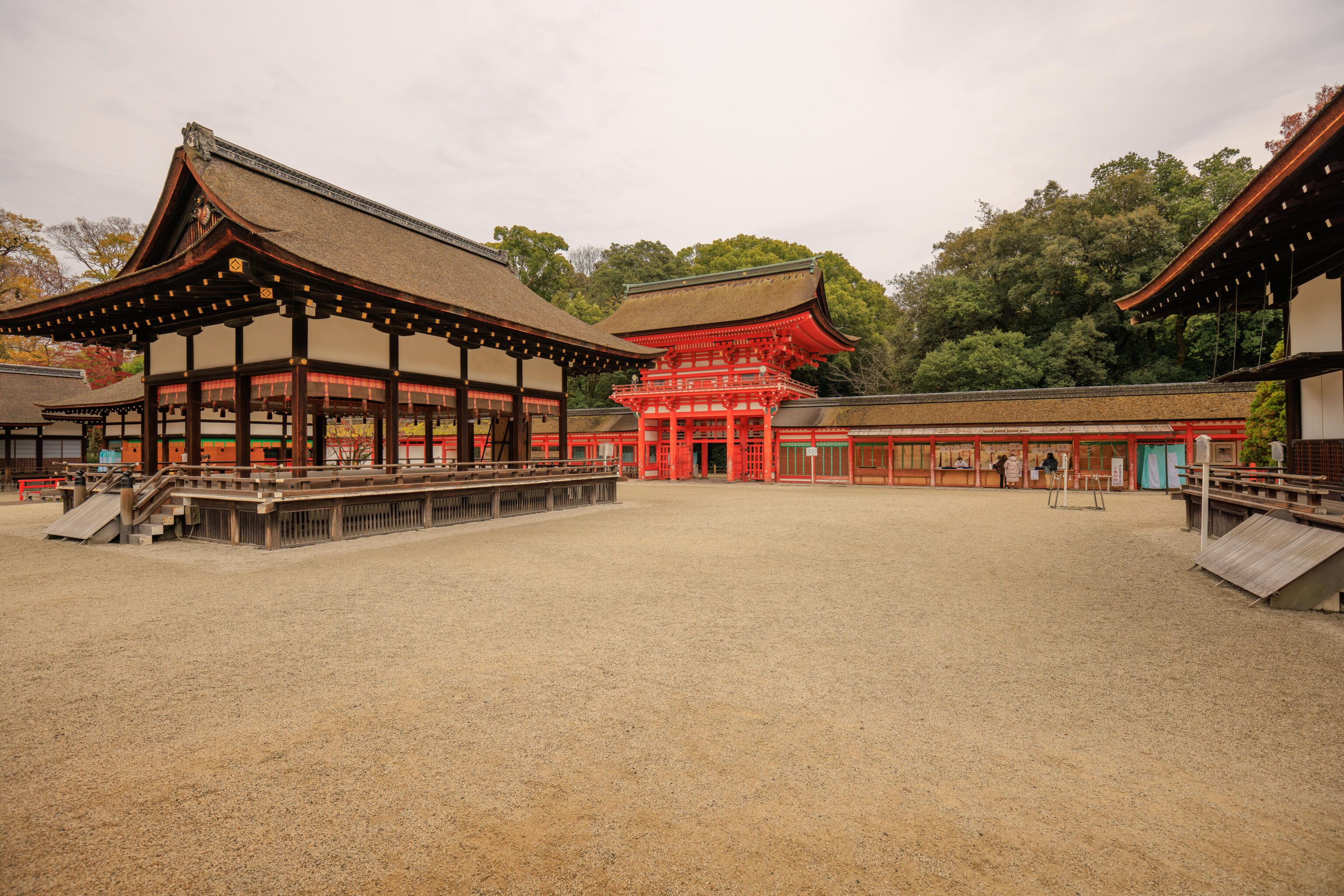


We briefly walked through the shrine. It was pretty quiet with only a few people around. The weather hadn’t been too great throughout the day with generally dark and overcast skies, and now it was getting rather late in the afternoon.
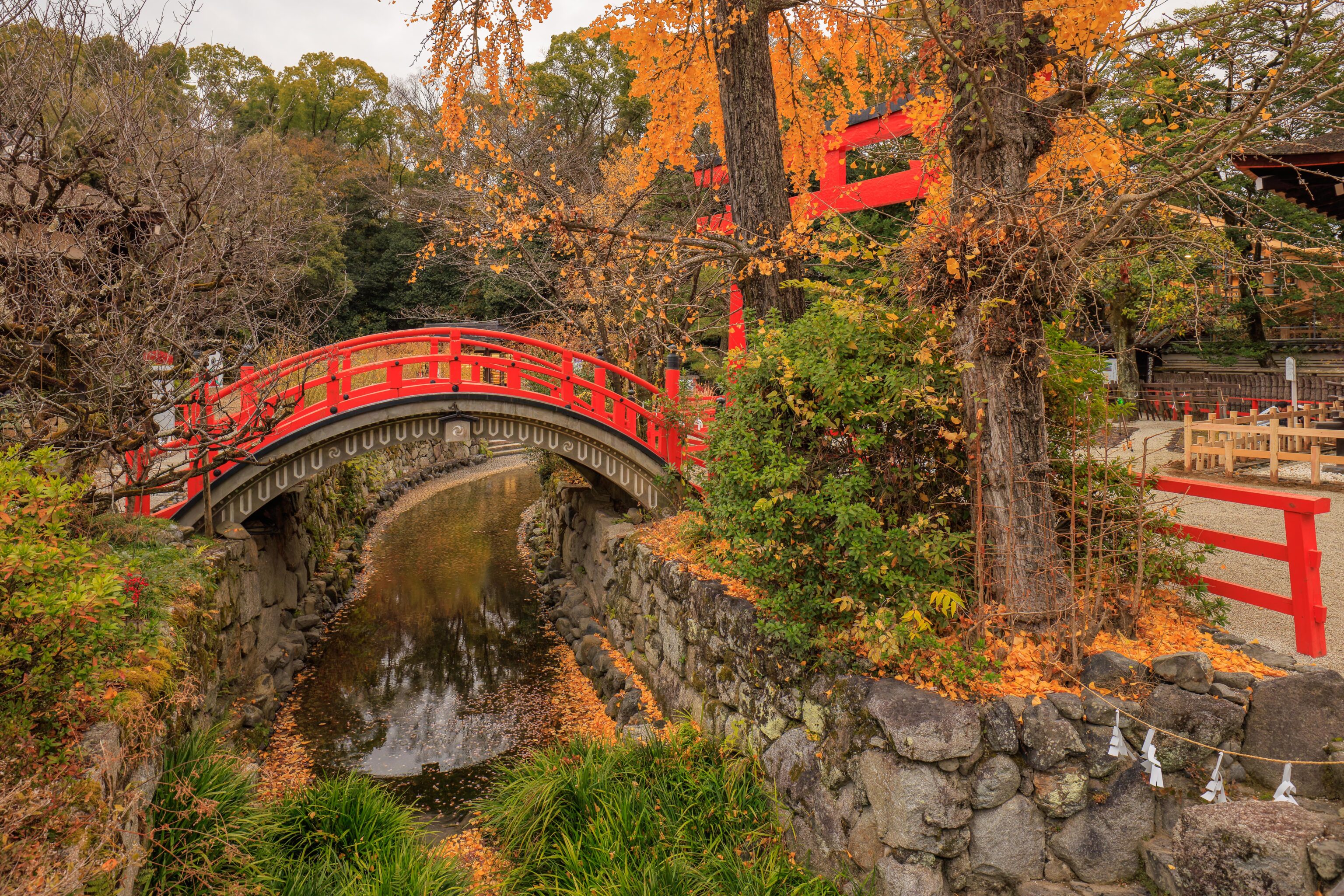
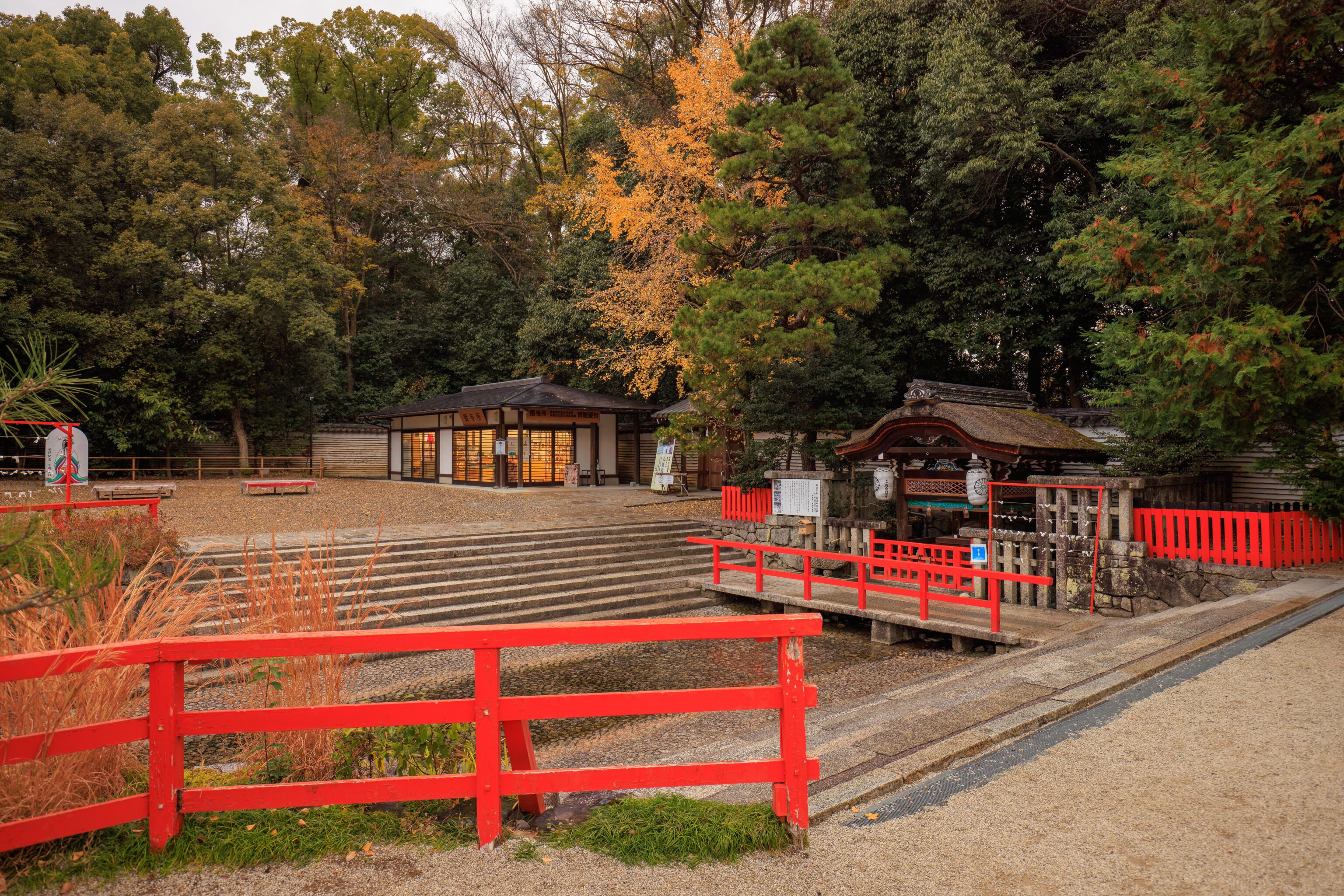
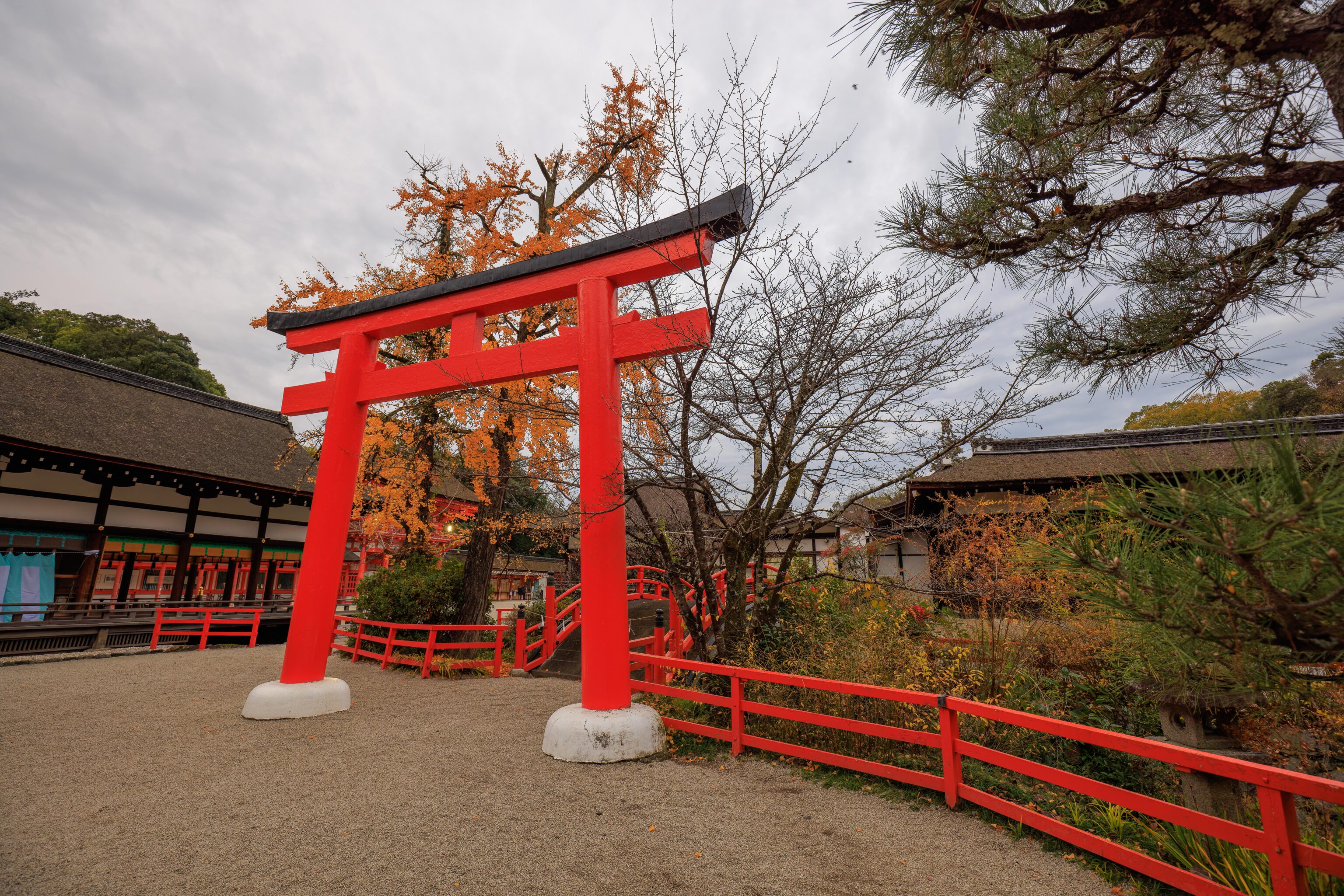
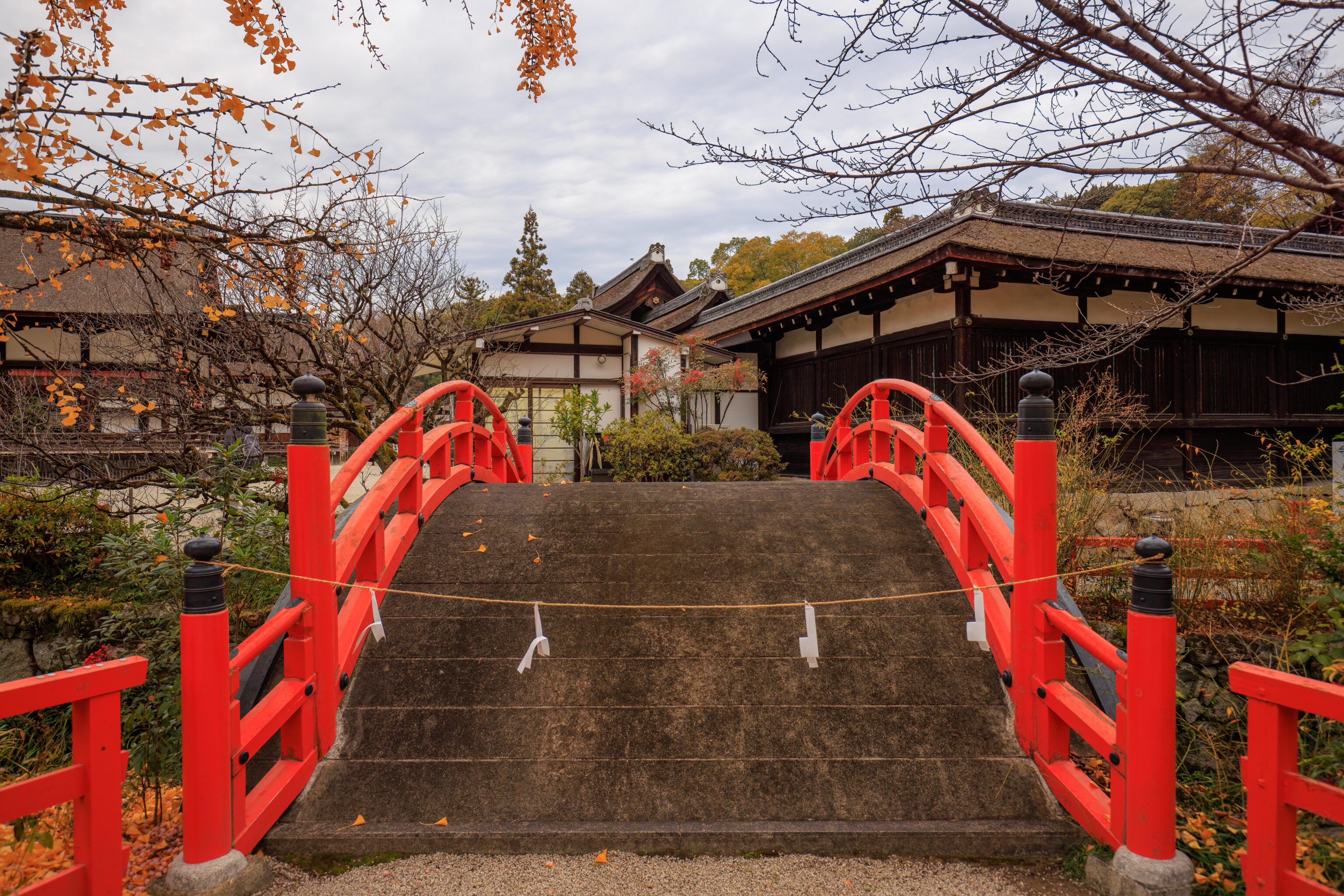
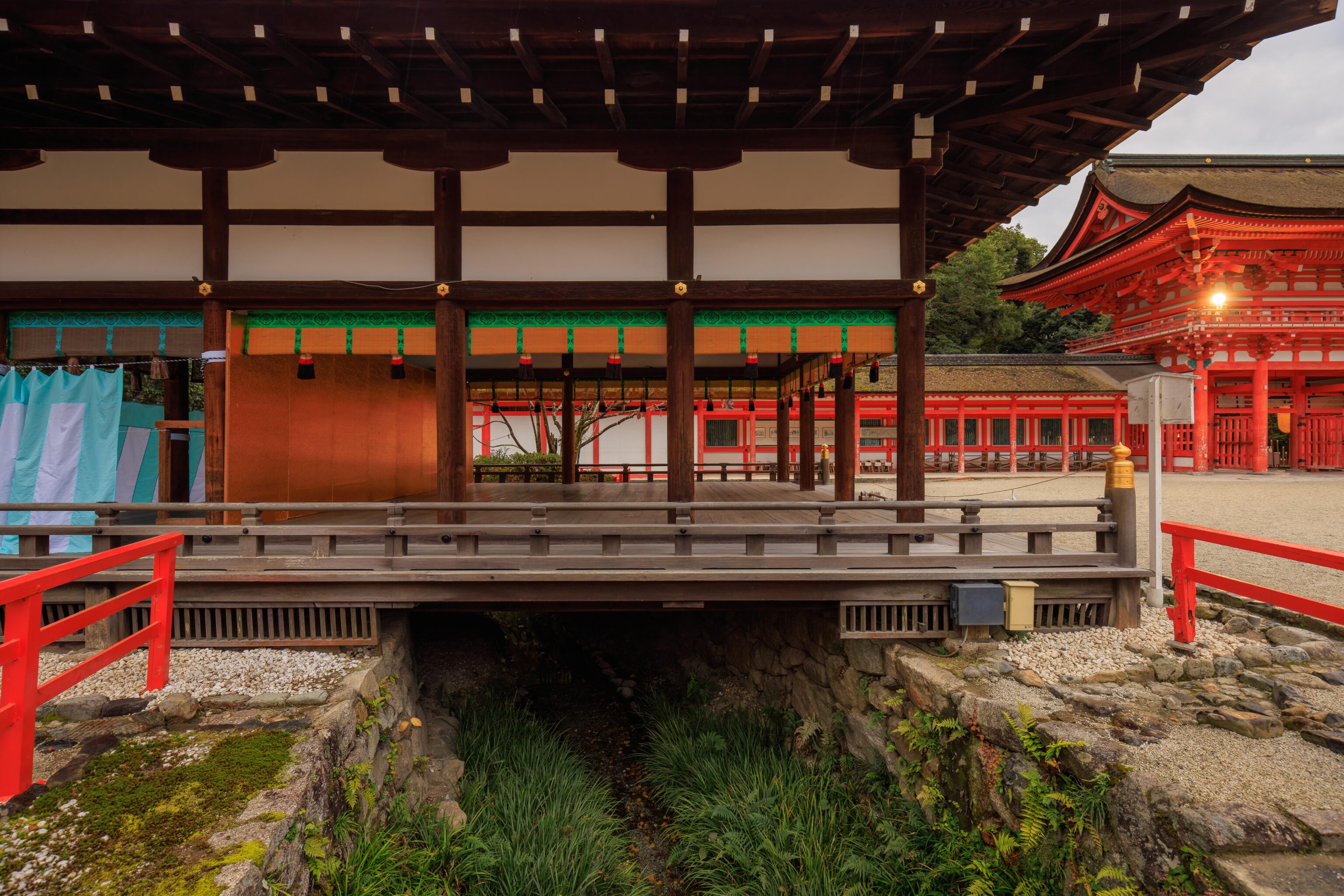
There was a nice little stream that ran through the shrine on the eastern side. Perhaps the same stream that we passed over by the entrance?

Sake is often provided to shrines in large barrels as donations as it is used as an offering to the gods7. The barrels are often on display at various shrines. This lighted display case shows some other kind of offerings.

We started to head back south, on the path that was adjacent to the one we arrived on.
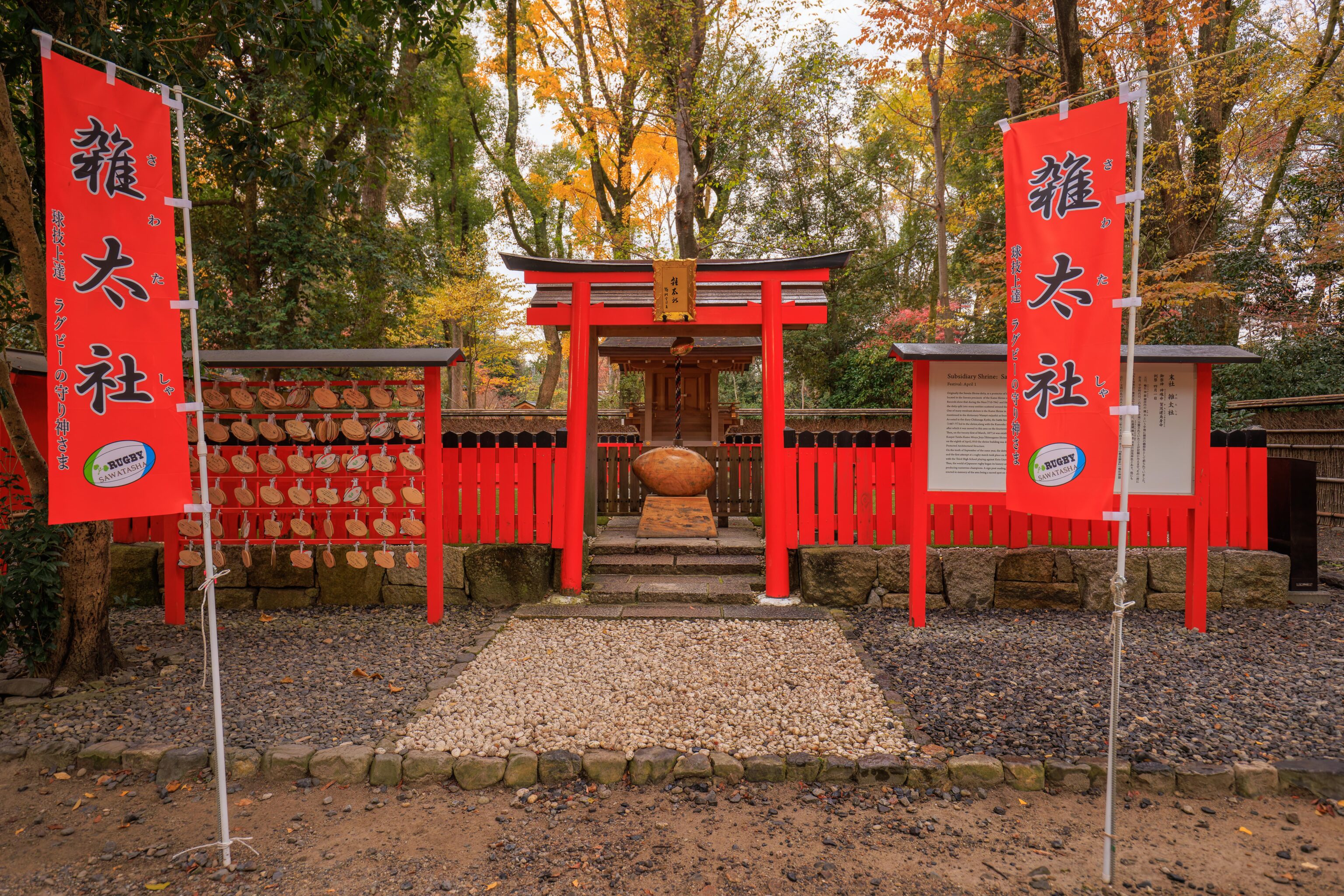
One surprising feature of Shimogamo-jinja is the Sawatasha shrine. It is dedicated to rugby! The sign on the right provides some details:
Subsidiary Shrine: Sawatasha Festival: April 1 Originally the Sawata Shrine deity, as a protector of the Imperial palace, was located in the Sawata precincts of the Kamo Shrine site on the Imperial Palace grounds. Records show that during the Nara (710-794) and Heian (794-1185) periods the deity split into many entities scattered around the whole county. One of many resulrant shrines is the Kamo Shrine in Sado Province, Sawata no Kori Kamo, mentioned in the dictionary Wamyō ruijushō as founded in the fourth month of the year 721. As noted in the diary Chikanaga Kyōki, the battle fires caused by the Onin-Bunmei disturbances (1467-77) led to the shrine, along with the Kamosha Kantachi Palace, going up in flames, after which it was moved to this area on the fourteenth day of the sixth month of 1470. Then, on the twenty-first of March, 1877, it was established as a subsidiary shrine of the Kanpei Taisha Kamo Mioya Jinja (Shimogamo Shrine) and according to the old laws, on the eighth of April, 1910 the shrine building was designated as a Special Protected Architectural Structure. On the tenth of September of the same year, the deity communed through the vehicle of the "ball," and the first attempt at a rugby match took place on the horse grounds in front of the shrine with the Third High School playing against Keio University. Thus, the world of Japanese rugby began its history and has grown till this day, producing numerous champions. A sign post reading, "Site of the First Kick" was erected in memory of the area being a sacred spot on the fifth of October, 1969.
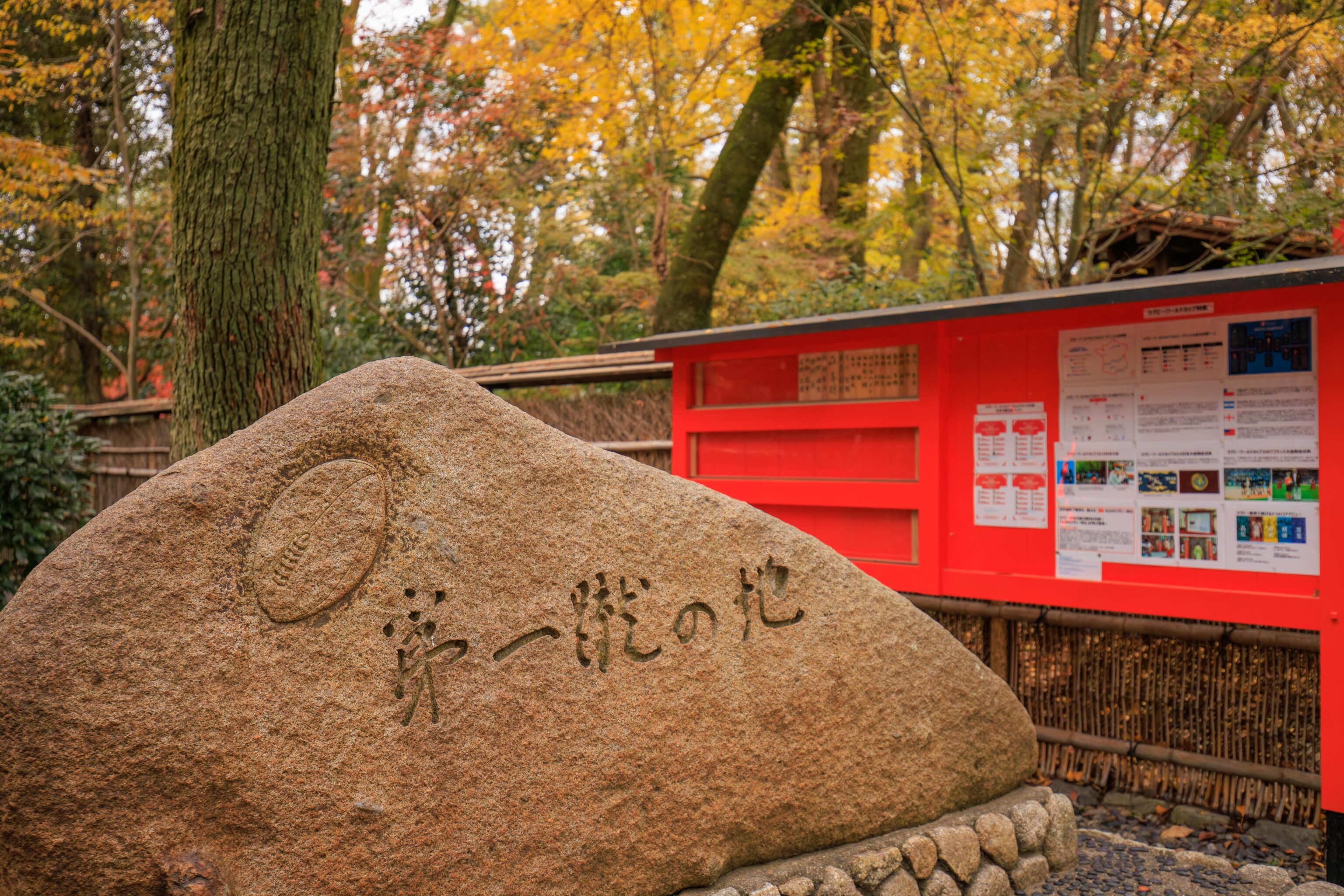
The sign post mentioned in the text appears to be this stone.
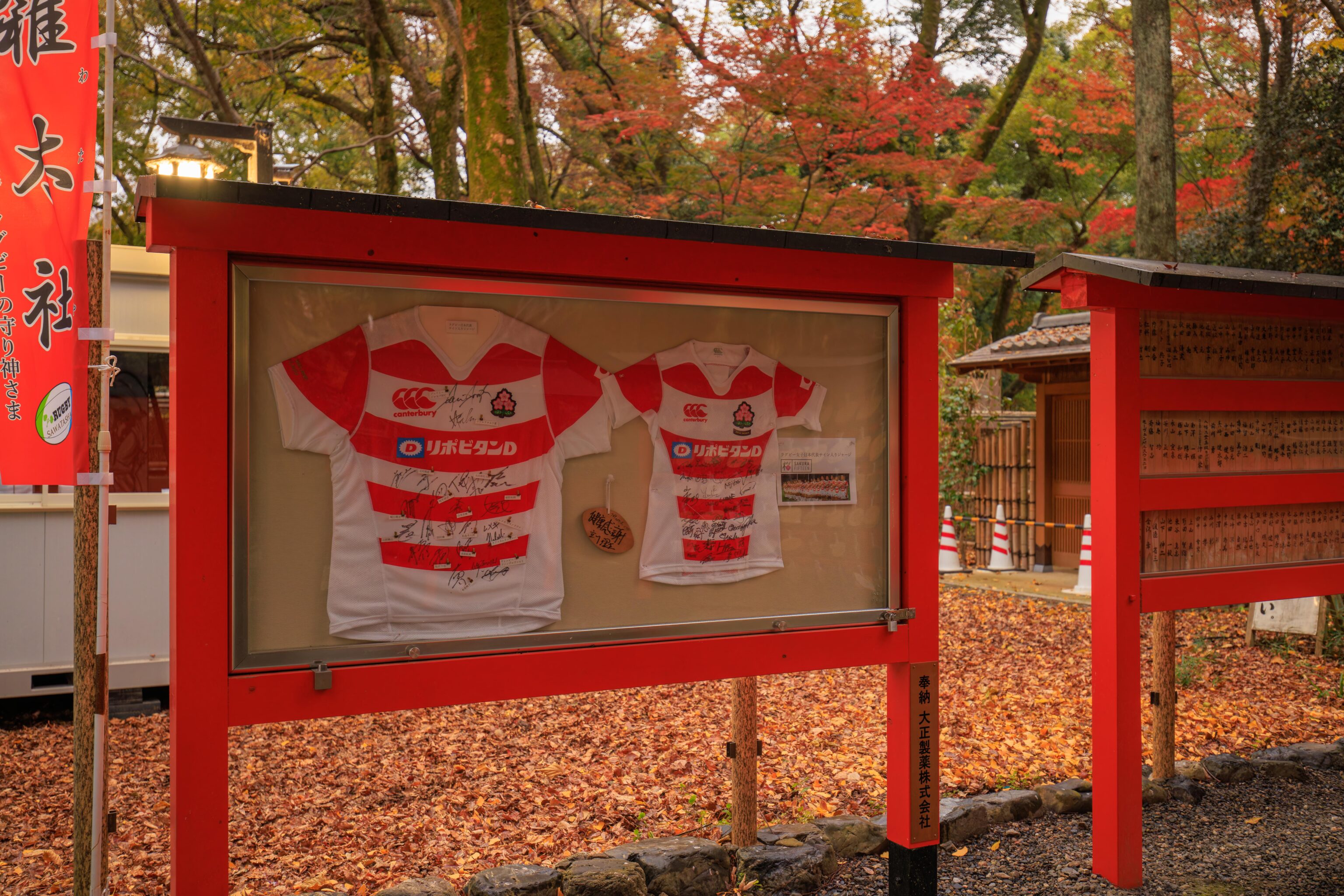
There were some signed jerseys on display.

The shrine’s ema were shaped like rugby footballs!



We briefly walked through the Kawai-jinja, near the entrance to Shimogamo-jinja. The temple website describes the god that this shrine is dedicated to as a “guardian for women”.

We continued on to the south to exit the shrine grounds. It was definitely darker now than it was when we first arrived! We crossed the street and continued walking to the south.
Dinner

We decided to head to Gion via the train at the nearby Demachiyanagi Station. To get there, we had to cross the Takano River once again. It took only a few minutes to reach the Gion-Shijo Station via the Keihan Main Line.
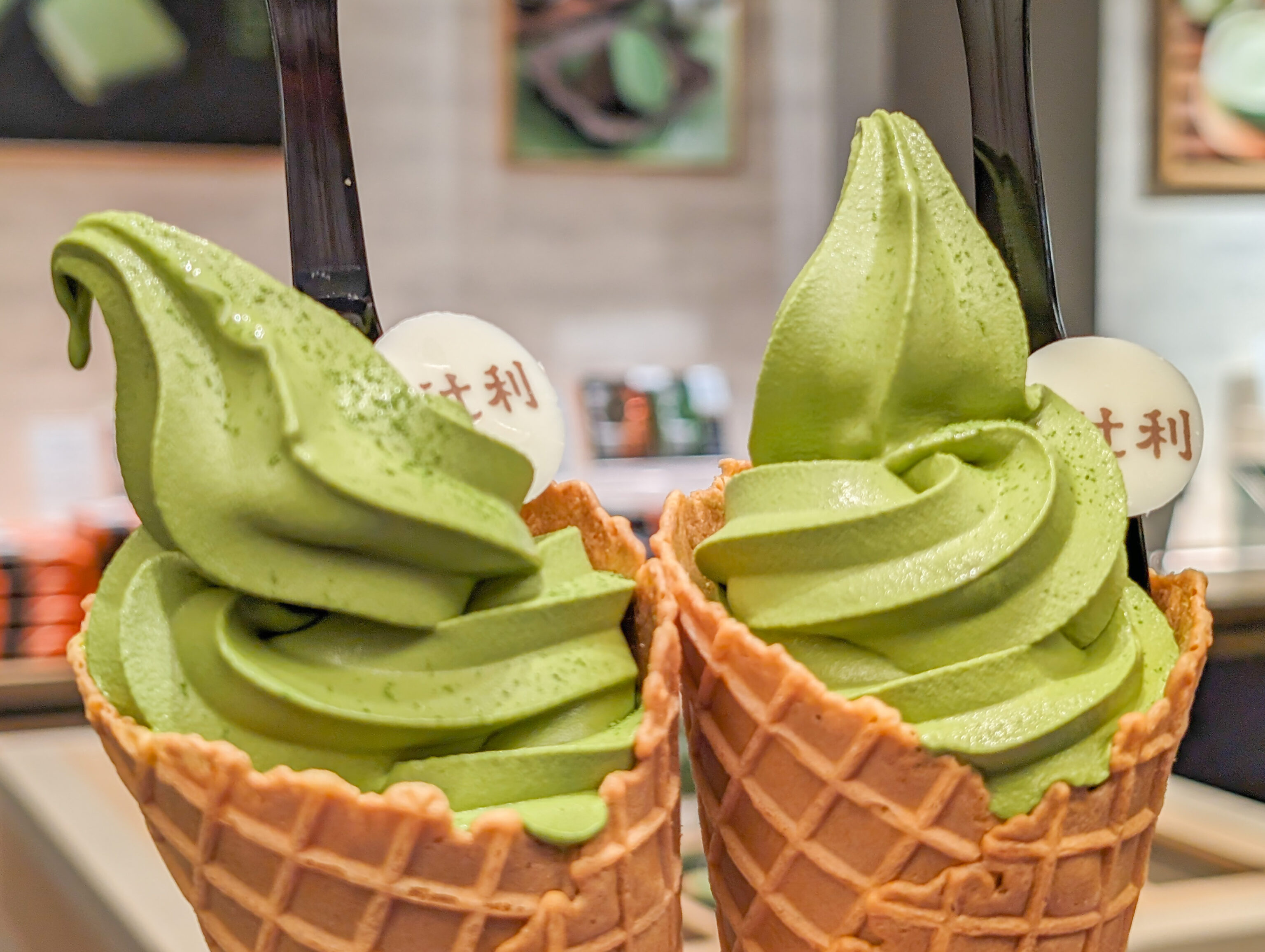
At Gion, we visited Tsujiri for the second time this trip. The upstairs cafe was closed but we got two soft serves from the ground floor shop. They have a new rich matcha soft serve with more matcha! So good!

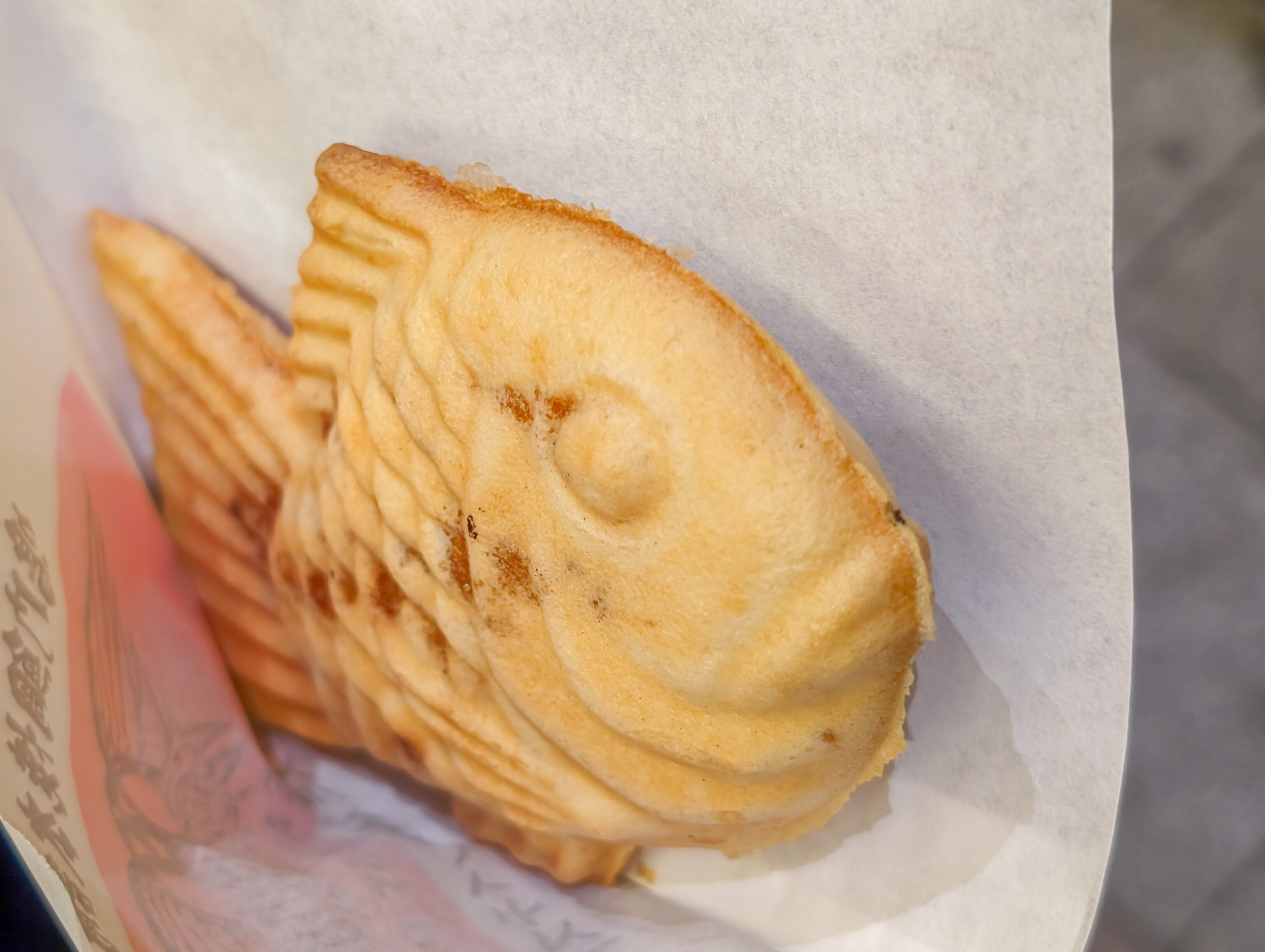
We also got two taiyaki from Naruto Taiyaki Honpo, the same chain that we visited yesterday to the north at Sanjo. One was the traditional red bean while the other was a special apple flavor. We had to wait awhile for the apple to be prepared.

The small taiyaki shop is across the street from 南座 Minami-za, Kyoto’s kabuki theater.
We decided to head down to Kyoto Station to get some more food. We once again took the Keihan Main Line, heading south to Tofukuji Station. From there, we switched to the JR Nara Line to travel one stop to Kyoto Station.




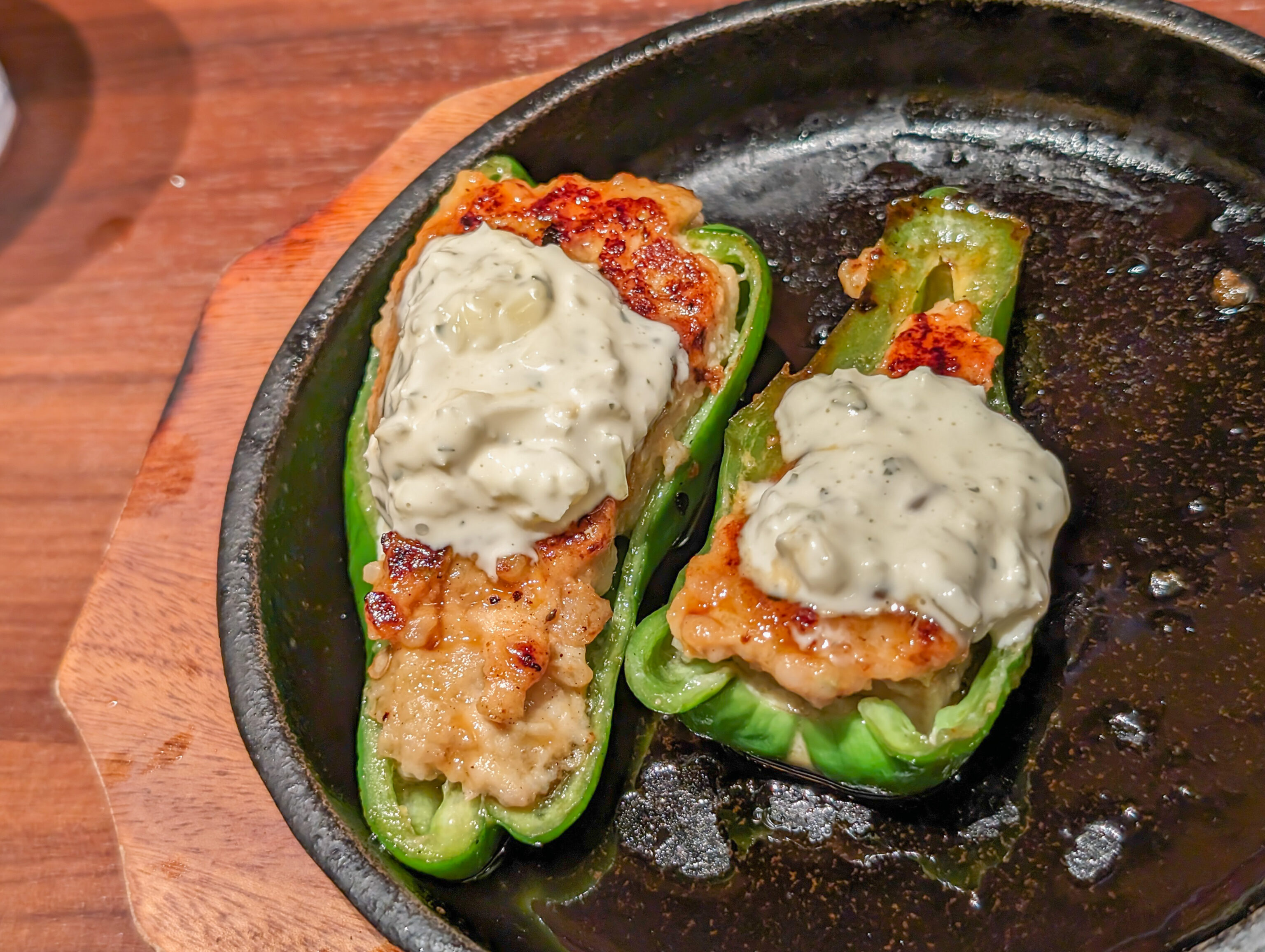

We decided to get yakitori for dinner again tonight at the same place in Kyoto Station as Saturday evening. It was good, just as it was the other day! We ordered lots of plain yakitori as well as chicken meatball, chicken croquette on a stick, miso yakitori, chicken in green pepper, and chicken in lotus root.
It was a nice meal to end our time in Kyoto as we are returning to Tokyo tomorrow morning. We walked around Kyoto Station a bit, seeing some of the other food options, before taking the subway back up to the Hyatt Place Kyoto one last time.
Footnotes
- https://www.enkouji.jp/en/grounds/: ❶ Honryutei ↩︎
- https://www.enkouji.jp/en/grounds/: ❸ Suikinkutsu ↩︎
- https://www.enkouji.jp/en/about/ ↩︎
- https://www.enkouji.jp/en/grounds/: ❻ Toshogu Shrine and the tomb of Tokugawa Ieyasu ↩︎
- https://en.wikipedia.org/wiki/Shishi-odoshi ↩︎
- https://en.activityjapan.com/feature/kyoto-december/: December Kyoto Light-up: Kyoto of Light/Shimogamo Shrine Tadasunomori ↩︎
- https://japansake.or.jp/sake/en/basic/sake-tradition-culture/ ↩︎


